

Tattooist helps cancer survivors
By Lauren Evoy Davis
About 25 years ago, a cancer survivor visited Vinnie Myers’ tattoo studio outside Baltimore with a request that would spark a new branch of the art form. After her double mastectomy and breast reconstruction, the woman wanted tattoos of nipples to restore what cancer had taken away.
“She came to me because I was known for realistic tattooing,” Myers told the Beacon. “We went through an old Playboy magazine to find what she wanted, and I tattooed it. Tattoo artists are known to make art look realistic, so it made sense. And from there, it just evolved into what it is today.”
Since that day, Myers has tattooed almost 15,000 cancer patients. He completes between 10 and 20 tattoos per week, and the waitlist is several months long.
Myers works closely with the Johns Hopkins Breast Center and the Center for Restorative Breast Surgery in New Orleans, whose surgeons recommend him to their mastectomy patients. He travels regularly to work in cities from San Diego to New York to Birmingham, Alabama.
Breast cancer affects one in eight women in the United States, according to the American Cancer Society. While some patients don’t need chemotherapy, most will have surgery — sometimes multiple surgeries — and possibly radiation.
For many women, getting 3-D nipple tattoos is the last step of cancer treatment, which can take months or even years. Myers, according to his website, “provides a unique service to survivors in search of closure.”
Self-taught artist
From the start, art was Myers’ first language. During high school at Milford Mill outside Baltimore, he spent hours sketching tattoo-style designs, developing an eye for line and shading that would later define his career.
Myers became even more interested in tattooing when he served as a medic for the U.S. Army, stationed in South Korea. After showing his heavily tattooed roommate some of his work and drawing a set of Harley Davidson wings on his forearm, he pulled together some homemade tattoo equipment and started inking his friends. His self-training led him to Europe, the
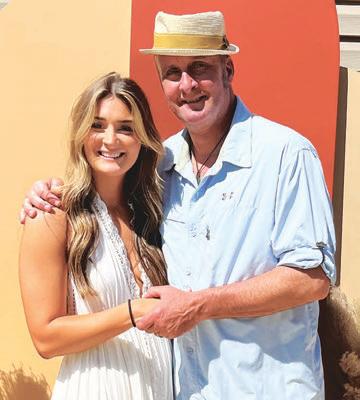
South Pacific and Central America, where he learned from legends in the industry, such as Ed Hardy of Tattoo City in San Francisco.
Tattoos as medical art
Myers’ tattoo studio in Finksburg is designed more like a day spa than a typical tattoo shop: inviting, comfortable and intentionally distracting from the heavy medical history clients bring with them. Tattoo sessions take place in a private room with a door for peace and quiet.
“You don’t want people thinking about cancer while they’re sitting in the chair,” Myers said. “You want them thinking about the tattoo experience. That’s part of the healing.”
From start to finish, the process takes about one hour. Most of this time is spent mixing the pigment to get it right: Myers combines up to seven pigments to achieve the most realistic effect for each client. The
tattoo itself takes about 15 minutes per side.
Over the decades, 3-D nipple tattooing has transformed from a niche request into a vital part of breast cancer recovery. While some surgeons attempt to recreate nipples surgically or with basic tattooing, the results often fall short.
Myers emphasizes that patients should seek out someone who does this kind of work, day in and day out, and ask to see samples of their work.
“I end up fixing a lot of work that was done in medical offices,” he explained. “It takes skill, experience and an understanding of how to work with each person’s skin, scars and history.”
Although insurance covers breast reconstruction, it doesn’t cover 3-D tattoos done outside of a medical facility. The Vinnie More than

LEISURE & TRAVEL
Explore Turkey’s delightful, modern cities and ancient ruins; plus, learn while traveling with Road Scholar page 15

ARTS & STYLE
Quilts of Valor Eldersburg honors Maryland veterans; plus, a holiday survival guide and a surprising way to prevent car theft page 18
Dentists help your heart
Can vitamin C cure colds?
Why some fear retiring k Latest scams
How we learn to be afraid
When I’ve had the privilege of watching my toddler grandson as he learned to walk, run and play, I noticed something striking: As he gained experience in the world, he grew more confident in some ways and more cautious in others. And in both things, he often took his cues — about how to feel and how to respond — from his parents and other caregivers.
Taking his first steps, he was awkward and fell repeatedly. But he would quickly get up and try again. If he happened to bump his head or land on his hand, he would often look up anxiously to see the reaction of nearby adults.
he’d be back on the prowl.
On the other hand, there are some things he’s grown surprisingly afraid of. He used to love going down slides at nearby parks. On his butt, on his stomach, on his side.

FROM THE PUBLISHER
By Stuart P. Rosenthal
If they were smiling and nodding as if to say, “Yep, that’s how we learn,” he would smile, get up and walk some more. But if an adult nearby happened to look alarmed or concerned, he would start to pout and cry.
He also learned the value of a placebo. When he seemed to feel some pain from a minor fall or bump, rubbing a spot or whimpering, we would ask if he wanted an ice pack and he would often nod vigorously.
He usually waited patiently (and silently) while we went to get it, then he’d perfunctorily touch the ice pack to the spot he hit, which was now magically healed, and
But something must have happened that I didn’t witness, because for the last couple of months he’ll do anything else at the park except go down a slide!
With some work, I’ve gotten him to slide down sitting on my lap, which he enjoys immensely. But he still won’t slide solo. I’m sure he’ll get back to it when he decides the time is right for him.
Of course, I have also learned from (often painful) experience over the years to be more careful. Two tumbles in particular stand out for me. Once, I tripped over some rocks at a public park when I thought I heard one of my children calling for me.
Another time, I landed hard on an asphalt parking lot when my foot caught on a concrete car stop that had been pushed out of place. In both cases, my recovery took some weeks (and stitches).
Both reminded me of sound advice from childhood: Watch where you are going, and don’t make any rash moves! Taking a

The Beacon is a monthly newspaper dedicated to inform, serve, and entertain the citizens of the Greater Baltimore area, and is privately owned. Other editions serve Howard County, Md. and Greater Washington, D.C.
Subscriptions are available via third-class mail ($12), prepaid with order. Maryland residents add 6 percent for sales tax. Send subscription order to the office listed below. Publication of advertising contained herein does not necessarily constitute endorsement. Signed columns represent the opinions of the writers, and not necessarily the opinion of the publisher.
Publisher/Editor Emeritus – Stuart P. Rosenthal
President/Associate Publisher – Judith K. Rosenthal
Executive Vice President – Gordon Hasenei
Editor – Margaret Foster
Art Director – Kyle Gregory
Vice President of Operations – Roger King
Advertising Representatives
Jill Joseph, Steve Levin, M.K. Phillips, Alan Spiegel
Assistant Editor – Ana Preger Hart
Editorial Assistant – Tori Cleveland
Submissions: The




little more time can avoid a lot of agony.
Looking at folks who work out at my gym, I see a number of older men and women working hard to stay fit and truly maintaining some impressive strength.
But many of them nonetheless walk hunched over and shuffle between the machines. I assume it’s a habit born out of earlier falls, fading eyesight or both. I’m hoping to avoid a similar gait by noticing it in others and trying to stay upright even if I walk more slowly than I used to.
Sometimes, however, I’m still the speedy walker I once was, and from that I learned yet another lesson about fear. I was heading into the supermarket the other day to pick up a head of lettuce. I hoped to make it a quick errand and get back to work.
I found myself entering the store behind a frail older gentleman moving very slowly with a rollator through the main doors. There was no getting around him as we went through the crowded entry vestibule and by some narrow fruit displays, and I was getting antsy.
Finally, I saw my opportunity to break to his right as the cantaloupe display ended, and I quickly slipped past him — without touching him or his rollator — toward my destination.
After a quick beat, I heard him yelling quite loudly after me: “Don’t scare me like that! I’m an old man!” I quietly apologized from a distance as I reached for the lettuce.
Of course, I felt terrible. I didn’t mean to scare him. It made me wonder what he had experienced that made him perceive a rush of motion behind him as disorienting and even frightening.
It made me a bit fearful, too: of possibly becoming so frail one day that I might feel the same way. I guess it depends on what I learn to be fearful of as I continue to move through life.
If you have thoughts on the topic of learned fear or would like to share lessons you’ve learned, please send us a letter to the editor via mail, email or our website. In the meantime, stay safe!

Letters to the editor
Readers are encouraged to share their opinions on any matter addressed in the Beacon as well as on political and social issues of the day. Mail your Letter to the Editor to The Beacon, P.O. Box 2227, Silver Spring, MD 20915, or email info@thebeaconnewspapers.com. Please include your name, address and telephone number for verification.
Dear Editor:
Please pass on my thanks to Tina Collins for the beautiful story about Vincent Lancisi and Everyman Theatre. My late wife and I have been in the audience for their productions over a span of 30 years, and I was there just two days ago for their mounting of The Piano Lesson by August Wilson. I took a copy of the Beacon with me and gave it to the box office staff, who are too young to be “people over 50.” They were delighted to see the story. I enjoy your newspaper, which I find in my senior living community, Charlestown. I will always look forward to the next month’s Beacon
George Alderson Catonsville, MD
Dear Editor:
Thank you for an excellent article on how Alzheimer’s disease and dementia affect pilots’ behavior and other folks’ behavior (“Do we really want to know?”, October 2025). I don’t see any columnists writing about this. You addressed an important topic.
Jo Ann West Via email
Dear Editor:
I am a regular reader of your newspaper and enjoy reading every issue from front to back. Articles are very informative and useful, and your newspaper is providing a
great service to seniors.
My favorite part is reflections from the publisher on the back of the front page. However, I am disappointed to read your reflections this month where you started describing what happened to the Air India flight. I have not read any official reports where it is stated that the pilot deliberately cut off the fuel to the engine. The cause of the crash is still under investigation, and I find it very inappropriate for you to state this as a fact and build your reflections around. Such a statement may lead readers to form the wrong impression of an airline.
Your reflections are still valuable, but I hope in future you use factual and officially validated information.
Pankaj C. Patel Laurel,
MD
From the publisher: Thank you for your comments. We certainly did not mean to single out any airline for criticism or blame. On the contrary, the whole point of the column was to show how people with depression often hide their condition. We need to encourage such people to get the help they need.
You are correct that the investigation of the crash continues. On July 12, the Washington Post quoted India’s Aircraft Accident Investigation Bureau repeating a conversation between the pilots from the cockpit flight recorder. That was the source of our statement that one pilot asked the other why he cut off the fuel switches.
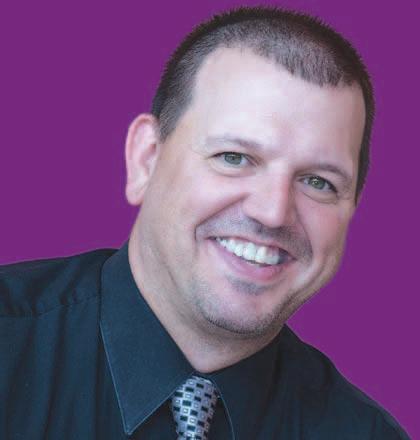
anage Regional M Manager, Smith,
rsing
Whetheryourplanistohost A Acccomm e re Nursing Car Nur & elopment,mentFamFamily
hether your plan is to host lovveed ones at home or to join the millions of Americans hitting the road during the holidaay y season, managing a care r y n f pla fo o yoourself or a loved one shouldn’t be a source of added holidaay y stress.
Below we’ve outlined several waayys Family & Nursing Care can help clients ensure the smooth planning and execution of their care plan heading into the end of the year.
Planning Ahead
g f It can be challengin foor families to find caregivers during a the holidayys. Kelly Ann Sharp, vicesf Director of Client Ser vi foor Family & Nursing Care, explains a y-w that “industr wide, the holiday y season is typically when demand sa f foorqualitycaregiversi attits
s a r quality caregivers i t i n highest, as many y families plan w d ga ra to t avvel an atther out of townn, v and as winter weather eveents increase, so do older adults’ risk ies. din of fall-relate njjur ”
a As a 24/7/365-dayys-a-year business, Family & Nursing
Care prides itself on being ready to help older adults and their families whenever a sudden home care need arises. However, it’s never too early to begin g f evaluaatting and plannin foor holidaay y care needs.
v T To o better pro ide high-quality df support, Sharp an feellow v Director of Client Ser viices, Natalie Blickman, recommend clients reach out to their Client
v Ser icesManager as soon as ra holidaay y t avvel and gathering plans are solidified.
CareDuring ome Care Expert x ert

Sm g Care During the Ho
odatingClients’
ccommodating Clients Unique Needs
Home care is not a one-sizefits-all approach. So, during the intake process, our Client v Ser viices Managers will work one-on-one with clients and their families to determine what v level of care and ser ices best suit a their holiday y needs.
ef a Clienttsmay y pr feerto simply request the same services they e y regularly use throughout th yeear ay on a specified holidayy..In other lien cases, c t ts and their families needing extra support during the a busy season may y request onev time ser viices outside of their typical care plan.
a Examples of holidayy-specific a lien care that c t ts may y request include:
• Overnight support, while a primar yfamilycaregiverisout
primary family caregiver is out of town
• Mobility or companionship assistance during family gatherings
df T
• Trransportation to an frrom gatherings outside the home
g f
• Assistance with packin foor ra holidaay y t avvels
ce f
• Support/assistan foor seasonal traditions, such as mailing holidaay y cards or preparing a special recipe
• Companionship, to ensure your loved one isn’t alone during this time
a “The holidayys can be a special o ga opportunity t atther, celebrate v and reconnect with loveed ones near and far. It’s also a time when
y f a families may feeel the most time , v and resource-starveed ” said Sharp. “Ouraima a attFamily & Nursing
Care i le: gi d
lientsa v Careissimmpple:giveec nt and“Duringho
lidaayygatherings,
dw their families peace of min whhen they need it most. This promise is , w a ld y eu one w uppho ye e r-round wiith compassionaatte, genuine support o f s w v and Caregiveer wh h feeel like familyy, , so older adults and their lovveed ones can spend less time y e en stressing and more tim njjoyiing ents.
’sfliffe e fuullest mom t ”
Getting Started
T Tooarrange home care services en a during the holidayys, curr t clients and families simply need to contact their Client Services Manager, who will review clients’ unique care requests and answer a a anny y questions you may y havve.
a a The holidayys may y also be a time when older adults consider initiating first-time home care services.
During ho y gatherings, people tend to spend more one-on-one time with older a family members and may y noticewaayys in which their t f loved one could benefi frrom additional support. Whether they’re interested in help with daily living or companionship v ser ices, our team is a resource f foor helping older adults access the quality care they need to maintain their independence at home,”said Blickman.
T To o get started, ts ma new clien ay y ea call Family & Nursing Car at t 410-697-8200 tw to connec with n one of the companyy’s Clients v Ser viicesManagers.
l ea a T Toole rn mor abbout Family y & a a Nursing Carre and its holiday y and ev v 24/7/365 serviices, pleas viisit our ly ea w weebsit attfamilyynnursingcare.com.



































Health Fitness &
Health Fitness &
Most breakfast cereals are junk food, but a few standouts are healthy
HE A L T H Y V O LUN T EER S NEEDED
Hopkins researchers seek treatment for Alzheimer’s disease
E A RL Y T O RI S E
Eating breakfast earlier is associated with a longer lifespan, says a new study
C U T T H AT CO LD
Vitamin C can’t prevent the common cold, but it may shorten its duration
To protect your heart, visit the dentist
By Christy Bieber
Heart health is key to overall health.
That’s why there has been ample research on how to improve cardiovascular function and combat age-related heart issues, including blood vessel narrowing and arterial stiffening.
Some of the healthy-heart tips are pretty obvious: Exercise. Don’t smoke. Control your cholesterol, manage stress and limit alcohol. Base your diet around fruits, vegetables and healthy proteins instead of processed or sugary snacks and fried foods. All of these are steps you can, and should, be taking.
However, recent research suggests that there’s another step you can take that can have a major impact on the prevention of cardiovascular disease. And, best of all, all you need to do is visit your dentist.
What recent studies show
According to a clinical trial published last August in the European Heart Journal, treating periodontitis can slow down the thickening of the inner two layers of the carotid arteries (the arteries on the sides of your neck).
This thickening is a major risk factor for cardiovascular disease and, as the Mayo Clinic reports, carotid artery disease is a leading risk factor for stroke.
The good news is that you may be able to minimize it with help from your dentist, as researchers have discovered that deep cleaning the mouth, including below the
gumline, could have a notable impact.
This was discovered after studying a group with periodontal disease who were otherwise healthy. Those participating in the study were divided into two groups: a control group that received only routine dental cleanings and test subjects who received intensive periodontal cleanings over a two-year period.
Those who received the intensive treatment, which removed more plaque and tartar, fared significantly better over the two-year period, with an ultrasound of the carotid arteries revealing less thickness within this group compared to the control group.
In fact, not only were their arteries not as thick, but they were also found to have better blood vessel function, as well as better bloodwork with lower levels of inflammatory and oxidative stress markers. These markers are known to contribute to atherosclerosis, a condition characterized by the narrowing of artery walls.
The improvement in artery functions wasn’t minor, either.
As Dr. Francesco D’Aiuto, one of the study co-authors, told Live Science, the effect of the dental cleaning was “comparable to what has been seen with lifestyle interventions and some pharmacological agents in similar populations.”
These improvements were evident at the one-year and two-year marks, as revealed by five separate blood tests and artery assessments.
Gum disease is costly and common
These study results are important because gum disease is very common. Around 40% of U.S. adults suffer from it, and it can result in a whole host of problems, including tooth loss, persistent bad breath and, as this new study shows, worse outcomes for your heart.
Unfortunately, 34.1% of adults didn’t go to the dentist at all in the past year, according to recent studies.
Skipping out on the dentist actually comes at a pretty huge cost, and not just for your health. When you don’t address minor problems, they can escalate into major and expensive issues, as recent research has shown.
In states like Utah, Nevada, West Virginia and Alaska, costs climb higher than they should due to delayed care. In Alaska, for example, treatment expenses are 654% higher than they otherwise would be because people put off getting dental care.
Get the dental care you need
Given how much delayed treatment increases costs, it’s ironic that cost is one of the key reasons why so many people put off getting dental care.
Seeing a dentist can be expensive, and it’s often not covered by insurance, with 38.9% of dental spending paid out of pocket (well above the 10.4% of healthcare spending that’s paid privately).
Dental care can be expensive for individuals because many standard insurance pol-
icies, including Medicare, often exclude coverage. Since Medicare doesn’t cover dental care, older Americans have a choice of buying coverage or paying the bills without help.
If you decide to pay out-of-pocket for your dental care, a health savings account (HSA) could make paying easier. You can invest in an HSA with pre-tax dollars and withdraw funds tax-free to pay for qualifying medical expenses. Dental care is one of those qualifying expenses.
If you are on Medicare, you may also be interested in enrolling in a Medicare Advantage Plan that includes dental coverage.
Advantage Plans can sometimes offer lower across-the-board out-of-pocket spending than traditional Medicare alone, which comes with 20% coinsurance cost for most outpatient services.
You’ll have to think long-term, though, as switching back to traditional Medicare later can be challenging since you may face difficulty getting a Medigap plan (a plan that supplements traditional Medicare by helping to pay those coinsurance expenses).
Ultimately, though, whether you’re getting the care paid for through your dental insurance at work, through a Medicare Advantage Plan or out-of-pocket, the key is to get your care.
Doing so does more than help you maintain a pretty smile. It could be the key to a healthy heart.
© 2025 The Kiplinger Washington Editors, Inc. Distributed by Tribune Content Agency, LLC.
Best ways to prevent or respond to choking
By Mike Stobbe
Each year, choking claims the lives of more than 4,100 Americans who are 65 or older. It’s the most vulnerable age group, accounting for about three-quarters of U.S. choking deaths, according to federal health statistics.
The death rate has been relatively steady, but the number has risen, as the size of the nation’s retirement-age population grows.
In response, a number of companies are marketing anti-choking devices to the elderly. Medical professionals have been debating whether to endorse the products, sold under the names LifeVac, SaveLix, VitalVac and the Dechoker.
Here’s a look at choking and the best ways to prevent choking deaths.
Choking risks rise with age
Choking occurs when food or some other object partially or totally blocks the windpipe, preventing oxygen from reaching the lungs.
Telltale signs include someone reaching for their neck and losing the ability to speak normally. Brain damage can occur after four minutes, and death can come just a few minutes later.
Older adults are at higher risk for a number of reasons. As people get older, mouth and throat muscles can weaken.
Older people also produce less saliva. Some chronic diseases and medications can make swallowing even harder. Dentures can be a choking risk.
Best ways to stop choking
Of course, choking risk can be reduced by cutting food into small pieces, chewing slowly, drinking plenty of liquids with meals, and not laughing or talking at the same time you are chewing and swallowing.
When someone is choking, you can try perhaps the oldest form of first aid: back slaps.
There’s also the Heimlich maneuver, named after the doctor credited with devising it in the 1970s. It involves standing be-
hind the choking person, wrapping your arms around their abdomen and — with a balled fist — thrusting inward and upward. The idea is that it forces air out of the lungs, along with the obstruction.
The American Red Cross recommends alternating back blows and abdominal thrusts in sets of five.
That’s for situations in which someone is around to help a choking victim. But what if they are alone?
It is possible for someone to try to selfadminister a Heimlich by thrusting their abdomen against the back of a chair. Not
Too much sleep may affect the brain
By Maureen Salamon
Sleeping nine or more hours each night is associated with worse cognitive performance, an effect that’s stronger among people with symptoms of depression, according to an analysis published in the April 2025 issue of Alzheimer’s & Dementia.
Researchers examined sleep duration and cognition in 1,853 adults ages 27 to 85 (average age 50; 57% women) who hadn’t been diagnosed with dementia or suffered a stroke.
Participants were categorized into four groups: no depression symptoms and no antidepressant use; depression symptoms and no antidepressant use; antidepressant use and
Choking
From page 4
everyone is able to do that, however.
Makers of some of the newer anti-choking devices say that’s where their products can make a difference.
“Elderly people probably are not capable of diving on a chair or counter,” said Arthur Lih, the founder and chief executive of LifeVac.
Risks of anti-choking devices
Anti-choking devices vary in design, but generally they look like a face mask attached to a tube or bellows, with a handle at the end. They typically sell for around $30 to $100.
A choking person dons the mask, pushes down on the handle and then pulls up. That is supposed to create a suction to pull out the blockage.
Some research suggests certain devices can injure the tongue or cause bleeding and swelling in the throat. And the U.S. Food and Drug Administration (FDA) has received re-
no depression symptoms; and depression symptoms along with antidepressant use.
Those who slept nine or more hours nightly were more likely than participants who slept between six and nine hours each night to score worse on cognitive performance tests evaluating aspects such as memory, visual-spatial skills and executive function.
These associations were stronger in people with symptoms of depression regardless of their antidepressant use. Long sleepers were also more likely to report symptoms of depression.
Many experts recommend healthy adults aim to get seven to eight hours of sleep each night.
ports that some products did not generate enough suction and left people with bruising around the face, lips and mouth.
Last year, the agency issued a notice to consumers that said it has not approved anti-choking devices sold over the counter, because their safety and effectiveness haven’t been established.
More research is needed
Right now, the consensus — even among anti-choking device manufacturers — is that back blows and abdominal thrusts should always be tried first.
Lih said thousands of nursing homes and emergency response agencies have purchased the newer anti-choking devices.
Manufacturers claim the products have saved thousands of lives in multiple countries, but it’s tricky to document how well they actually work.
Perhaps a study could compare what happened during choking incidents at nursing homes that stock the devices with those that don’t. —AP
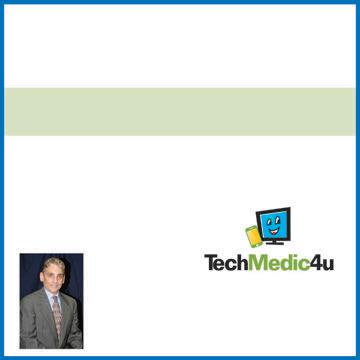
The results of this study don’t prove that sleeping less will prevent or treat depression or other mental health disorders, but the findings may help scientists better understand the connections between sleep and mental health.
Maureen Salamon is executive editor of Harvard Women’s Health Watch © 2025 Harvard University. Distributed by Tribune Content Agency, LLC.
BEACON BITS Oct. 30
ALZHEIMER’S HOME SAFETY WEBINAR
This free webinar, hosted by the Alzheimer’s Association, reviews home safety practices that support the independence of people living with Alzheimer’s. Join on Zoom on Thu., Oct. 30 at 11 a.m. For registration details and the webinar link, visit bit.ly/AlzHomeSafety. For more information about the Alzheimer’s Association and the free resources they offer, visit alz.org.
MAIL OR EMAIL FOR FREE INFORMATION
For free materials about area housing communities, just complete and clip this coupon and mail, or take a picture and email, to the Beacon.
Housing Communities
o Brightview (see ad on page 11)
o Charlestown/Erickson (see ad on page 7)
o Christ Church Harbor Apts (see ad on page 9)
o Oak Crest/Erickson (see ad on page 7)
o Park View Laurel (see ad on page 6)
o Park View Towson (see ad on page 6)
o Park View Fullerton (see ad on page 6)
o Park View Rosedale (see ad on page 6)
o Pickersgill (see ad on page 10)
o St. Mary’s Roland View Towers (see ad on page 16)
o Virginia Towers (see ad on page 19)
o Warren Place Senior Apartments (see ad on page 21)
o Westminster House (see ad on page 17)
Clinical Health Studies
o Alzheimer’s Disease Study (see article on page 8)
o Exercise & Sleep Study/mPATH (see ad on page 8)
o Fall Prevention Study (see ad on page 8)
Check the boxes you’re interested in and return this form to: The Beacon, P.O. Box 2227, Silver Spring, MD 20915 or take a picture and email to housing@thebeaconnewspapers.com.
Is your breakfast cereal actually healthy?
By Robert H. Shmerling, M.D.
I have a confession: I like cereal. And not just a little.
When I was a kid, I’d have ready-to-eat breakfast cereal in the morning and again after dinner as dessert. Raisin Bran, Corn Flakes and Rice Krispies were in regular rotation. Cereal is still on my short list of favorite foods.
I’m not alone in this. In the U.S., more than a quarter of children and adolescents devour ready-to-eat cereal for breakfast most days of the week. Among adults, around half eat cereal at least once or twice a week. Beloved athletes often appear on cereal boxes, and a number of celebrities have proclaimed their love for the stuff, including Jerry Seinfeld and Justin Timberlake.
Many companies tout cereal as a healthy choice. A 2025 study of more than 600 breakfast cereals disputes this, particularly
for many cereal all-stars.
How healthy are breakfast cereals?
Not so much. Many — perhaps most — of the biggest names in the cereal world have a lot of sugar, minimal protein before adding milk, a bunch of additives and not much else. Some don’t even have much fiber, a feature that is supposed to make breakfast cereal a healthy choice.
As for the 120- to 150-calorie count often listed on the side of the box, it turns out that the actual portions many people consume (including me) can easily soar past 300 calories at a time.
And what about eye-catching boasts like “heart healthy,” “high in vitamins,” “all natural,” or “part of a healthy breakfast”?
Unfortunately, researchers have found little connection between health claims and overall nutritional content. In fact, for many
cereals, the bulk of the nutritional value relies on something that’s not even in the box: milk.
A
closer look at cereals
The seven top-selling breakfast cereals in the U.S. are: Cheerios, Frosted Flakes, Honey Nut Cheerios, Honey Bunches of Oats, Cinnamon Toast Crunch, Froot Loops and Lucky Charms.
Most are sweet, highly processed, and have lots of empty calories. Some add vitamins, though usually in small amounts, while others sprinkle in sodium (salt) you don’t need.
But breakfast cereals are getting healthier, right?
A study published in May 2025 found just the opposite. It looked at the nutritional value of 1,200 ready-to-eat cereals marketed to children that were new or reformulated between 2010 and 2023 and noted a clear
ENTERPRISE RESIDENTIAL
MOST COMMUNITIES ARE 62 AND BETTER
ANNE ARUNDEL COUNTY
The Greens at Hammonds Lane: 410-636-1141
Park View at Furnace Branch: 410-761-4150
Park View at Severna Park: 410-544-3411
BALTIMORE CITY
Ednor Apartments I: 410-243-0180
Ednor Apartments II: 410-243-4301
The Greens at Irvington Mews: 410-644-4487
Park Heights Place: 410-578-3445
Park View at Ashland Terrace: 410-276-6440
Park View at Coldspring: 410-542-4400
BALTIMORE COUNTY
Cove Point Apartments I: 410-288-2344
Cove Point Apartments II: 410-288-1660
Evergreen Senior Apartments: 410-780-4888
The Greens at English Consul: 410-789-3000
The Greens at Liberty Road: 410-655-1100
The Greens at Logan Field: 410-288-2000
The Greens at Rolling Road: 410-744-9988
Park View at Catonsville: 410-719-9464
Park View at Dundalk: 410-288-5483 • 55 & Better
Park View at Fullerton: 410-663-0665
Park View at Miramar Landing: 410-391-8375
Park View at Randallstown: 410-655-5673
BALTIMORE COUNTY (CONT.)
Park View at Rosedale: 410-866-1886
Park View at Taylor: 410-663-0363
Park View at Towson: 410-828-7185
Park View at Woodlawn: 410-281-1120
EASTERN SHORE
Park View at Easton: 410-770-3070
HARFORD COUNTY
Park View at Bel Air: 410-893-0064
Park View at Box Hill: 410-515-6115
HOWARD COUNTY
Park View at Colonial Landing: 410-796-4399
Park View at Columbia: 410-381-1118
Park View at Ellicott City: 410-203-9501
Park View at Ellicott City II: 410-203-2096
Park View at Emerson: 301-483-3322
Park View at Snowden River: 410-290-0384
PRINCE GEORGE’S COUNTY
Park View at Bladensburg: 301-699-9785 • 55 & Better
Park View at Laurel: 301-490-1526
Park View at Laurel II: 301-490-9730
trend in the wrong direction: increasing amounts of fat, sodium and sugar along with decreasing protein and fiber.
Fortunately, there are efforts underway to improve the types of cereals kids eat: USDA guidelines for school breakfast programs this year aim to gradually reduce the amount of sugar and salt and increase the amount of whole grains required. (Cutting out artificial colors and flavoring won’t transform these cereals into healthy or nutrient-dense foods.)
Better breakfasts
So, what’s a breakfast eater to do? When it comes to breakfast choices, surely we can do better than sugar-packed, high-calorie, low-nutrient cereals that are hyped by marketers (especially to kids) and sell so well.
One option, of course, is to switch to healthier breakfast foods like oatmeal with fruit and nuts, eggs, yogurt with fruit, or peanut butter on whole-grain toast.
But if you’re as stuck on ready-to-eat breakfast cereal as I am, check the nutrition label for these healthy aspects:
• whole grain as the first ingredient
• at least 2.5 grams of fiber per serving, though at least 5 grams per serving is even better
• minimal or no added sugar or sodium
• 150 calories or less per serving — and measure that serving, which is often ¾ to 1 cup (far less than the average bowl holds!)
• a short ingredient list with items you recognize as food (rather than things like butylated hydroxytoluene or food dyes).
Examples of cereals that fulfill most of these include Shredded Wheat, Kashi Go Lean, Cheerios, Weetabix and All-Bran. [Ed. Note: Wheat-based products such as Cheerios contain glyphosate, a weedkiller linked to cancer, and chlormequat, a pesticide also linked to cancer. The EPA says that these trace amounts are well below the levels considered safe for human consumption.]
The bottom line
If you like ready-to-eat breakfast cereal, it’s not the worst thing out there, especially when served with skim or non-dairy milks.
But be selective and careful about portion control. A healthy breakfast helps fuel your body and should be more than sweet, crunchy junk food masquerading as a nutritious meal.
Robert H. Shmerling, M.D., is a senior faculty editor and Editorial Advisory Board member at Harvard Health Publishing.
© 2025 Harvard University. Distributed by Tribune Content Agency, LLC.
How to ward off gallstones and treat vertigo
By Howard LeWine, M.D.
Q: I didn’t realize I have gallstones in my gallbladder until they were seen when I had an abdominal CT scan. I don’t have any symptoms. Do I need to change my diet or take any medication to dissolve them?
A: The gallbladder is a small organ that sits under the liver in the right upper portion of our abdomen. It plays an important role in helping us digest food. But we often don’t acknowledge it unless something goes wrong — which happens in about 15% of American adults.
The gallbladder essentially serves as a storage room for bile, squeezing the fluid into the small intestine to help break down dietary fats we consume.
Gallstones develop when bile or related fluids form hardened stonelike lumps that can grow and multiply. Most gallstones are made of cholesterol. Much less often, the primary component of the stones is bilirubin.
Risk factors for cholesterol gallstones include extra weight or obesity, a family history of gallbladder issues, Native American or Latino heritage, and being 40 or older. Women are twice as likely as men to develop gallstones, which top the list of gallbladder problems.
Gallstones that are not causing any symptoms usually do not require specific treat-
ment. When gallstones do cause symptoms, most often the reason is a blockage from a stone that has moved out of the gallbladder and gets stuck in the bile duct.
Typically, this leads to pain in the right upper belly, often radiating to the back, along with nausea. The stone may pass on its own after minutes to hours.
However, a stone that remains lodged can lead to more serious problems from pressure backing up, including cholecystitis (an inflamed gallbladder), cholangitis (infection in the bile duct), and pancreatitis (inflammation of the pancreas). These conditions need to be treated in the hospital and almost always require cholecystectomy to surgically remove the gallbladder.
While dietary changes alone usually cannot dissolve established gallstones, preventing weight gain, avoiding simple sugars and limiting unhealthy fats may help prevent new gallstones from forming and current stones from enlarging.
So, the recommendation is to follow a “heart healthy” diet and consume just enough calories to meet your daily needs. This means focus on plenty of fruits and vegetables; choose fish or plant-based proteins such as beans and nuts; and use unsaturated fats like olive or avocado oil.
Body size is one part of the equation. Another risk factor is rapid change in body
weight. Gallstones often form when someone gains or loses a large amount of weight over a relatively short period of time. If you need to lose weight, do it slowly. Don’t go on a crash diet.
Q: I get attacks of dizziness that cause me to feel off-balance. The episodes usually last a few minutes. I can stop them if I stay very still. Is this a type of vertigo?
A: Recurring vertigo usually is caused by a disorder involving the vestibular (balance) system, which includes several tiny, fluid-filled canals — called the semicircular canals — inside your ears.
The most common reason for recurring vertigo is benign paroxysmal positional vertigo (BPPV). In this condition, tiny crystals in the inner ear can become dislodged when you do a particular movement, such as putting your head back to use eye drops. The loose crystals then bump around inside the semicircular canals, which normally help the brain sense the position and movement of the head.
The loose crystals send confusing signals to the balance center in the brain. Typically, the first time an episode hits, you may be woozy and dizzy most of the day. After that, vertigo happens only when you change your position — lie down, sit up, roll over, or move your head up or down. Once you stay
in a new position, the crystals land in one place, and the vertigo stops.
Meniere’s disease can also cause recurring vertigo. In this condition, a small canal inside the ear becomes swollen for uncertain reasons. It causes not only attacks of vertigo but also nausea, a sensation of fullness or ringing in the ear and hearing loss. The attacks typically last longer than the recurring episodes of vertigo due to BPPV. You should make an appointment with your primary care provider or an ear, nose and throat specialist to help diagnose the cause of your vertigo.
For BPPV, a simple maneuver to reposition loose crystals in the ear can reduce or eliminate symptoms. There are a number of different types of maneuvers, and each one includes a series of positions done while sitting or lying down.
The Epley maneuver is the gold standard. Your doctor may give you a diagram to try it at home. But be careful: If you don’t do it correctly, the loose crystals may wind up in the wrong place and worsen vertigo. It’s best to have a clinician or physical therapist guide you through it the first time.
Howard LeWine, M.D., is an internist at Brigham and Women’s Hospital and assistant professor at Harvard Medical School. © 2025 Harvard University. Distributed by Tribune Content Agency, LLC.
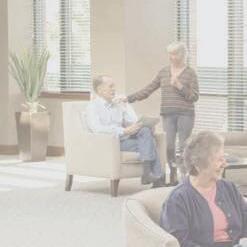


Health Studies INFORMATION ON AREA CLINICAL TRIALS
Hopkins Alzheimer’s study seeks volunteers
By Margaret Foster
If you’re between 50 and 80 years old and want to help find new treatments for Alzheimer’s disease, Johns Hopkins University School of Medicine needs you.
There’s a study underway that will determine whether a low dose of an anti-seizure drug can treat parts of the brain that are overactive in people who are at risk for Alzheimer’s.
“This particular study is designed to an-
BEACON BITS
Nov. 3
GRIEF SUPPORT GROUP
swer the question: If we slow down that hyperactivity, does that prevent people from developing memory problems and from developing the precursor to Alzheimer’s disease?” said Arnold Bakker, Ph.D., the study director.
How the study works
The study requires five in-person visits to the Johns Hopkins East Baltimore campus. Anyone with normal cognitive function is welcome.
Join a grief support group hosted by the Chesapeake Life Center. One group offers collaging as a way to remember and process the loss of a loved one. It meets on Mon., Nov. 3 from 6 to 8 p.m. on Zoom. Register by calling (888) 501-7077 or emailing griefinfo@chasapeakelifecenter.org. For more information, visit hospicechesapeake.org/events.
CARE MANAGEMENT WEBINAR
Nov. 6
Seabury offers a free informational webinar, “What is Care Management?” Find out how you can assist family members and get them the specialized care they need without doing it all alone. Join the presentation on Thu., Nov. 6 at noon. Register at SeaburyResources.org/events to get the webinar link. For more information, email info@seaburyresources.org or call (202) 289-5690.

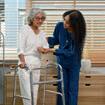
•
• No experimental drugs
check-ins
• Costs: standard insurance co-pays and deductibles apply
WHO CAN JOIN THE STUDY?
Are you 65 or older and have fallen at least twice in the past 6 months?Call (443) 898-8160 today to see if you qualify for our fall prevention study and receive 2 FREE balance screenings and a video-based gait analyses — a combined $800 value!
Not eligible? Call to see if you qualify for other studies and get 1 FREE fall risk screening ($250 value).
At the initial baseline visit, participants will take a few simple tests.
“We do paper-and-pencil testing to test cognition and specifically memory,” Bakker said. “People tolerate that very well.”
This is a randomized study, which means that participants will be randomly assigned to one of two groups.
One group will take a daily dose of levetiracetam for two weeks, then wait a month before starting a placebo, or sugar pill, for two weeks.
The other group will start with the placebo, wait a month, and then take the study drug for two weeks.
Both groups will undergo two MRIs so researchers can see the effects of the drug, namely, a reduction in overactivity in the brain. (An MRI, which takes less than an hour, does not deliver radiation, unlike a CT scan or PET scan.) All participants will be compensated for their time.
“We’ve really tried to do this as minimally invasive as possible,” Bakker said. “People are really only on active treatments for two two-week periods.”
A way to help science
For those who have been affected by the devastation of Alzheimer’s, helping researchers find a way to prevent the disease is paramount.
“We’re at a very exciting time when it
BEACON BITS
Ongoing
SPRITe-Falls (Steady Strides, a Physiatry Led Rehabilitation Intervention Targeting Falls) Randomized Controlled Study
comes to Alzheimer’s research,” Bakker said. “We’ve had several treatments being approved for Alzheimer’s disease, and there are a lot of new studies that have become available over the last five to 10 years or so that help us understand what is happening in the brain on this trajectory from aging into Alzheimer’s disease.”
The biggest risk factor for Alzheimer’s is aging, but scientists still don’t understand why.
“We don’t exactly know why people transition from an aging process into a pathological process where these Alzheimer’s disease proteins start to accumulate in the brain,” Bakker said.
“This is one of the studies that is very important in trying to understand that transition and what the processes are that contribute to that conversion from a normal, successful aging trajectory into one where you start to develop symptoms” of Alzheimer’s disease, he said.
Whether or not you’re concerned about your own memory, this Hopkins study could help future generations.
“As the population starts to age, it’s really important that we understand these transition points” between normal aging and memory symptoms, Bakker said, “and this study is a direct attempt to understand that process.”
For more information, call (410) 5024797 or email treataging@jh.edu.
HALLOWEEN COSTUME DRIVE
Keep costumes out of landfills and make Halloween more affordable for Maryland families. Drop off used costumes through Wed., Nov. 5. Drop-off locations include Clinical Associates at Towson, 515 Fairmount Ave., Suite 100, Towson; Clinical Associates at Woodholme, 1838 Greene Tree Rd., Suite 135, Pikesville; and Clinical Associates at Reisterstown, 120 Westminster Pike, Suites 104 & 106, Reisterstown. For more information, call (410) 296-5300 for Towson; (443) 471-0460 for Pikesville; and (410) 526-800 for Reisterstown.

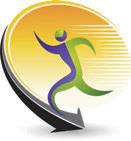

Do late breakfasts speed up aging?
There’s an interesting new study that might make you think twice about when you have your first meal of the day.
Researchers followed about 3,000 adults (between the ages 42 to 94), for more than two decades. They weren’t looking at calories, carbohydrates or cholesterol. Instead, they looked at something most of us never think about: the timing of breakfast.
marker of health than the cause of it.
In other words, if you’re dealing with fatigue, depression, pain, low appetite or dental problems, you might naturally put off getting up and eating breakfast. These are the same health issues that are linked to shorter lifespan. So is it the late breakfast, or the fact that people who feel unwell often eat later?

On average, most people in this study ate breakfast around 8 in the morning. But as they aged, their first meal shifted later and later, sometimes creeping toward 10 or even 11 in the morning.
DEAR PHARMACIST
By Suzy Cohen
That may not sound like a big deal, but it ended up revealing something shocking: Each additional hour of delay in breakfast was associated with about a 10% higher risk of dying earlier!
By the end of the study, the folks who pushed their first meal to late morning had lower survival rates compared to those who ate earlier.
Of course, this doesn’t mean that eating breakfast at 10 a.m. will automatically shorten your lifespan. We can’t take it that far. The researchers themselves make it clear that the timing of breakfast is more a
Didn’t track foods
This study by Mass General Brigham didn’t evaluate what people were eating. A breakfast for one person might have been oatmeal and berries. For another, breakfast might be black coffee with two sugars. And let’s be honest, breakfast has become a socially acceptable way to eat cake, cleverly rebranded as pancakes, muffins and waffles. These food choices can affect blood sugar, blood pressure and heart health very differently. For someone with undiagnosed hypertension, a late-morning coffee might push up blood pressure when what their body really needs is potassium, magnesium or fiber-rich foods.
As a pharmacist, I look at the bigger picture. Breakfast timing may be a clue, but food choices and medications also play a
huge role in long-term health.
For instance, certain blood pressure drugs can deplete magnesium, a mineral that naturally relaxes blood vessels. Coffee depletes magnesium too. It’s a “drug mugger” effect I often write about.
If your breakfast is coffee, your blood pressure will slowly rise and eventually worsen heart rhythm and blood pressure.
The takeaway? Don’t panic if you prefer a later breakfast; the study shows correlation, not causation.
But it’s a reminder that meal timing deserves our attention. When you do eat, make it count with foods that fit your body and health needs. Early bird or brunch lover, what’s on your plate matters more than the clock.
For a deeper dive into this study and some free ebooks to learn more, visit me at suzycohen.com or check drugmuggers.com.
Suzy Cohen is a registered pharmacist and author of The 24-Hour Pharmacist and Real Solutions from Head to Toe

Have confidence in every conversation.
Do you find it difficult to use a standard phone? Do people ask you to repeat yourself during telephone conversations? Do you miss important calls because you can’t hear the phone ring? The Maryland Accessible Telecommunications (MAT) program is here to help by giving Maryland residents the opportunity to apply for State-provided telecommunications equipment to independently make and receive calls. Once you qualify, a skilled evaluator meets with you to determine the best device to support your day-to-day communications. The MAT program has a variety of equipment solutions to support clearer communication, including:
• Amplified phones
• Tablets
• Ring signalers
• Phones with large and/or high contrast buttons
• Captioned Telephones
• And more
For more information: 800-552-7724 | 410-767-7253 (Voice/TTY) 410-801-9618 (Video Phone) | MDMAT.org
Salmonella can hit older adults harder
By Maureen Salamon
Pop quiz: what is salmonella? If you’ve ever had a run-in with this bacteria, you know it can cause a food-borne illness called salmonellosis, a form of food poisoning.
But you may not know that salmonella bacteria sicken an estimated 1.35 million people every year in the United States. In fact, it’s the leading cause of hospitalizations and deaths due to food poisoning.
Salmonella bacteria can be sneaky — not only by triggering unusual complications, but infecting people in startling ways, said Dr. Elizabeth Hohmann, an infectious disease specialist at Massachusetts General Hospital.
One patient she treated showed up with an abdominal aortic aneurysm — a dangerous bulge in the lower section of the body’s largest artery — that looked infected. Testing revealed a surprising culprit: salmonella. “It can be kind of scary,” Hohmann said.
How do people get infected by salmonella?
Many of the foods salmonella bacteria lurk in are raw or undercooked. Breaded raw chicken products like nuggets and chicken Kiev are one way it may reach your table. But a variety of foods have been implicated, including flour, organic basil, cantaloupes,
ground beef, nut butters, raw cookie dough, eggs and raw or unpasteurized milk.
Backyard chickens are another source of salmonella outbreaks. Even pets such as turtles and frogs, along with dog food, have contributed to multistate outbreaks in recent years.
You can also become infected by handling contaminated food and spreading the bacteria from your hands to your mouth. Additionally, you can spread it to others on your hands or even on your clothes without becoming sick yourself.
“It’s a bug that’s carried in stool and animal feces and is also present in the environment,” Dr. Hohmann said. “So it can set up shop in lots of different inanimate objects, soils and machinery, especially in moist environments.”
What symptoms can salmonella cause?
Most of the time salmonella infection leads to gastroenteritis, usually causing just an upset stomach, abdominal cramps and diarrhea. These symptoms can start as soon as six hours after ingesting the bacteria. Typically, symptoms resolve on their own within two to three days.
Some people have such mild symptoms they’re barely noticeable. “The classic case might be a college student who eats a burrito from a sketchy place, gets sick for a


A place of independence
Pickersgill assisted living residents are rarely in l their rooms! Instead, , theyy’re out and about— participating in a community activity or event or dining with friends.
A place of beauty

Living in n this community—ttucked d into a beautiful West Towson neighborhood —you or your loved one beau njoy a warm welcome and daily activities, and they’ll appreciate the will enj paths, beautifully landscaped grounds, lovely gardens and more. walking path
A place of caring

Call 888-877-9883 today for more information or to schedule your personal tour. h
couple of days, gets better, and doesn’t think anything of it,” Hohmann said.
Most people will get better on their own without any medicines. Replacing lost fluids by sipping water or electrolyte drinks to avoid dehydration will help.
Sometimes symptoms are more serious, such as severe abdominal cramping and bloody diarrhea, or unexplained high fever and fatigue. These symptoms require a call to your doctor: fever higher than 102° F; diarrhea that doesn’t improve after three days; bloody stools; or vomiting so severe it prevents you from keeping liquids down.
Complications of salmonella
Certain folks are especially vulnerable to serious infection, including adults 65 and older, pregnant women, children under 5 and people whose immune systems are weakened by diseases (such as cancer) or treatments (such as immunosuppressive drugs).
A small percentage of those infected can have salmonella in their blood, which can spread the infection to other parts of the body, such as the urinary tract, bones, joints or central nervous system (brain and spinal fluid).
And, like Hohmann’s patient with the abdominal aortic aneurysm, on rare occasions salmonella can lead to unusual blood vessel complications in people who already have atherosclerosis, blockage of the arteries caused by plaque buildup.
How to avoid salmonella
We all can take steps to avoid the food
poisoning, illness and hospitalizations that salmonella exposure can cause.
Hohmann and the CDC suggest these strategies:
• Using hot water and soap, wash cutting boards or plates on which you cut into raw foods — including vegetables and fruit — before using those surfaces for other purposes. If possible, use separate cutting boards for produce, meat and fish.
• Refrigerate or freeze foods that are perishable, prepared or left over within two hours to thwart salmonella growth.
• Always wash hands well with soap and water before preparing food and after contact with animals, using the toilet or changing diapers.
• If you have a sick pet, take extra care handling its feces and wash your hands thoroughly afterward.
Take additional steps to help more vulnerable people stay healthy:
• Don’t let young children touch high-risk animals, such as turtles, frogs, chickens or ducks.
• Older adults and those with compromised immune systems should take extra care to wash and cook foods thoroughly.
“You hate to make people paranoid, so that we’re washing our lettuce leaves with soap, but it’s worth thinking about these things, particularly if you have people in your household who are susceptible — which is an increasing number of people,” Hohmann said.
© 2025 Harvard University. Distributed by Tribune Content Agency, LLC.




Each assisted liv g resident enjoys three chef-prepared meals per day, ing re y services, medication administration, help with daily housekeeping and laundry se quest, and all included in a reasonable monthly tasks and more—always by reques o all of the fee. Each h resi s dent also has access to all Pickersgill ameni l ties. private, full bath, and residents are Our assisted living g residences include a priv wish. This is a lifestyle dedicated to encouraged to decorate their homes as they al staff. independence and assured by a caring, professionalfessionalstasttaff. 61 6 5 Chestnut Avenue • Towson, MD 21204 • www.PickersgillRetirement.org



Peace of Mind is Priceless






When you pre-plan your funeral, you give both yourself and your family a great gix . Your service will be exactly as you wish, and your family won’t be burdened with arrangements. Pre-planning also fixes the cost at today’s prices. Plus: We offer a price-match guarantee! Call today
Does vitamin C help us when we’re sick?
By Jesse Bracamonte, D.O.
Dear Mayo Clinic: Growing up, I was told to drink orange juice when I had a cold because “vitamin C is the cure.” Does vitamin C actually help us when we’re sick? What are its benefits?
A: Vitamin C supports our immune systems, helps our bodies heal wounds, protects our joints and contributes to collagen formation, the main protein in the body. Vitamin C is an antioxidant that helps protect your cells against what are called free radicals, which are produced when your body is exposed to potentially cancerous things like cigarette smoke and the sun’s rays.
Despite all these benefits, there is limited evidence to support the notion that taking extra doses of vitamin C can effectively prevent common colds.
For most people, taking a daily oral supplement of vitamin C via tablets, drink powders or gummies may not be that beneficial because you might be getting it from your diet naturally. Our bodies don’t produce vitamin C on their own, but a lot of what we eat contains it.
Citrus fruits may come to mind first when we hear vitamin C, but foods such as potatoes, spinach, tomatoes, berries and other brightly colored fruits and vegetables are full of the nutrient. An orange bell pepper has three times the amount of vitamin C than an orange.
It’s important to get your daily intake of fruits and vegetables, but many people in the U.S. do not. A little bit of added vitamin C may actually help those individuals. In most cases, though, if you are able to access and eat an adequate supply of fruits and vegetables in your diet, that will be sufficient.
Some people may think they should double up on vitamin C supplements when feeling ill, but more is not always a good thing. Taking too much vitamin C can cause side effects that may make you feel worse, such as nausea, vomiting, stomach cramps, bloating, fatigue, heartburn, headaches, skin flushing and even kidney stones in some people. Make sure you do not consume more than the recommended daily dose of 500 milligrams.
High levels of vitamin C can also interfere with multiple kinds of medications and results of certain medical tests such as blood or glucose screening. For patients undergoing chemotherapy, the use of antioxidants such as vitamin C might lessen the effect of the chemotherapy drugs.
Overall, taking vitamin C in the form of food is the best way to reap its benefits, but taking extra vitamin C, particularly for those with a weakened immune system, would not be harmful.
Some limited research shows that vitamin C may shorten the duration of a virus, such as the common cold. So, if your cold lasts a
week, a few limited studies found taking vitamin C may reduce it by 13 hours, which isn’t all that significant. Consult with your healthcare team to decide what’s best for you. — Jesse Bracamonte, D.O., Family Medicine, Mayo Clinic, Phoenix.
Dear Mayo Clinic: We hear a lot about “heart-healthy” diets, but the guidance seems to always change. It’s confusing to me. What foods are important, and what should we avoid?
A: One of the most important factors for a healthy heart is to try to follow a healthy diet. We usually recommend a Mediterranean diet, which is mostly based on trying to eat more white meat, such as fish and chicken, instead of red meat, such as beef or pork. This type of diet also focuses on eating more vegetables, fruits, nuts, seeds, legumes, beans, whole grains and olive oil.
Cutting out trans fats in fried food, frozen pizza and microwave popcorn, and added sugar in soda, sweets and pastries is also important for your heart health. Switching your snacks, especially before or after exercising, from cookies or chocolates to carrots or broccoli, can help you continue to snack but with beneficial ingredients.
Staying hydrated helps your heart pump blood more effectively and benefits your blood vessels and muscles. Drink at least two liters of water each day.
Avoiding tobacco and alcohol can prevent future cardiovascular conditions. It has been shown that after just one year of quitting tobacco use, your risk of having a cardiovascular event drops in half in comparison with patients who smoke tobacco. Alcohol use can trigger difficulty for you to fall asleep, and sleep disorders have been linked to heart disease.
In general, low-sugar, low-salt and lowcarb diets are usually helpful for all our patients to stay out of cardiovascular risk. Start adjusting your lifestyle little by little but consistently, taking baby steps — even if you adjust just one factor per day or per week, whether that’s trying to cut down on the amount of high sugar, high fat or high salt in your diet. Little by little and with time, those changes will remain and will help you prevent any type of long-term medical condition in the future. — Juan Cardenas Rosales, M.D., Internal Medicine, Mayo Clinic, Jacksonville, Florida
Mayo Clinic Q & A is an educational resource and doesn’t replace regular medical care. This Mayo Clinic Q&A represents inquiries this healthcare expert has received from patients. For more information, visit mayoclinic.org.
© 2025 Mayo Foundation for Medical Education and Research. All Rights Reserved. Distributed by Tribune Content Agency, LLC.







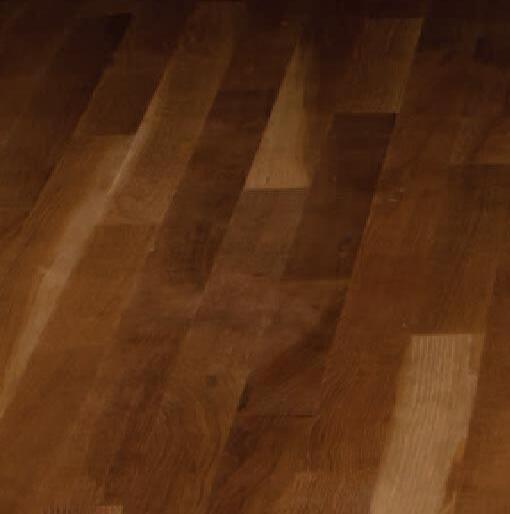












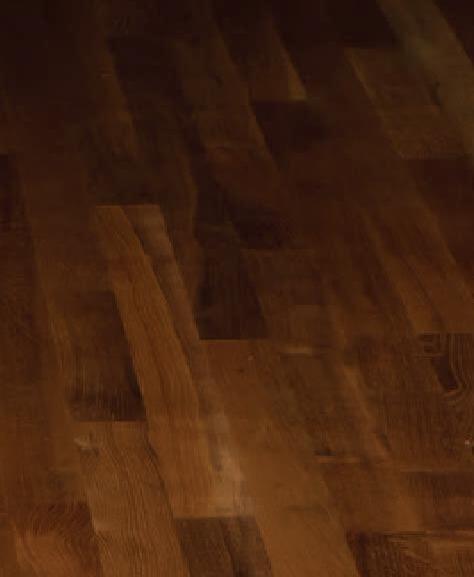
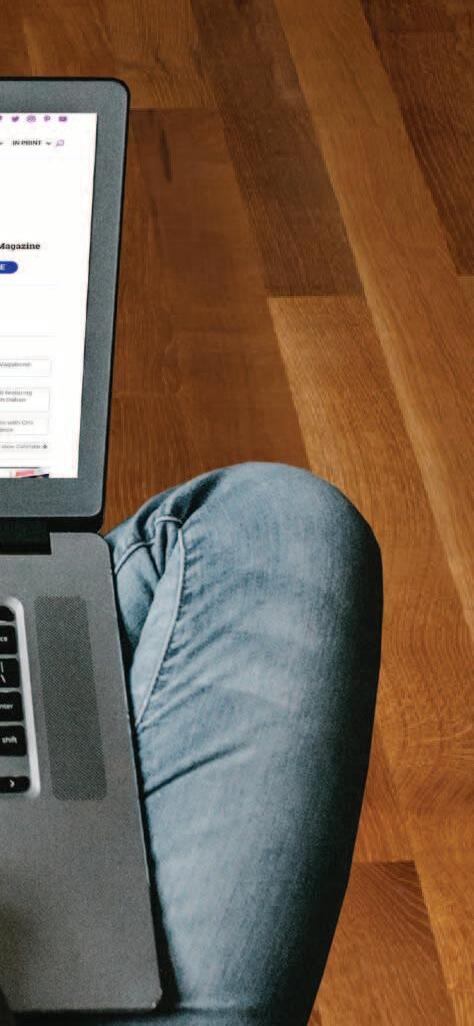
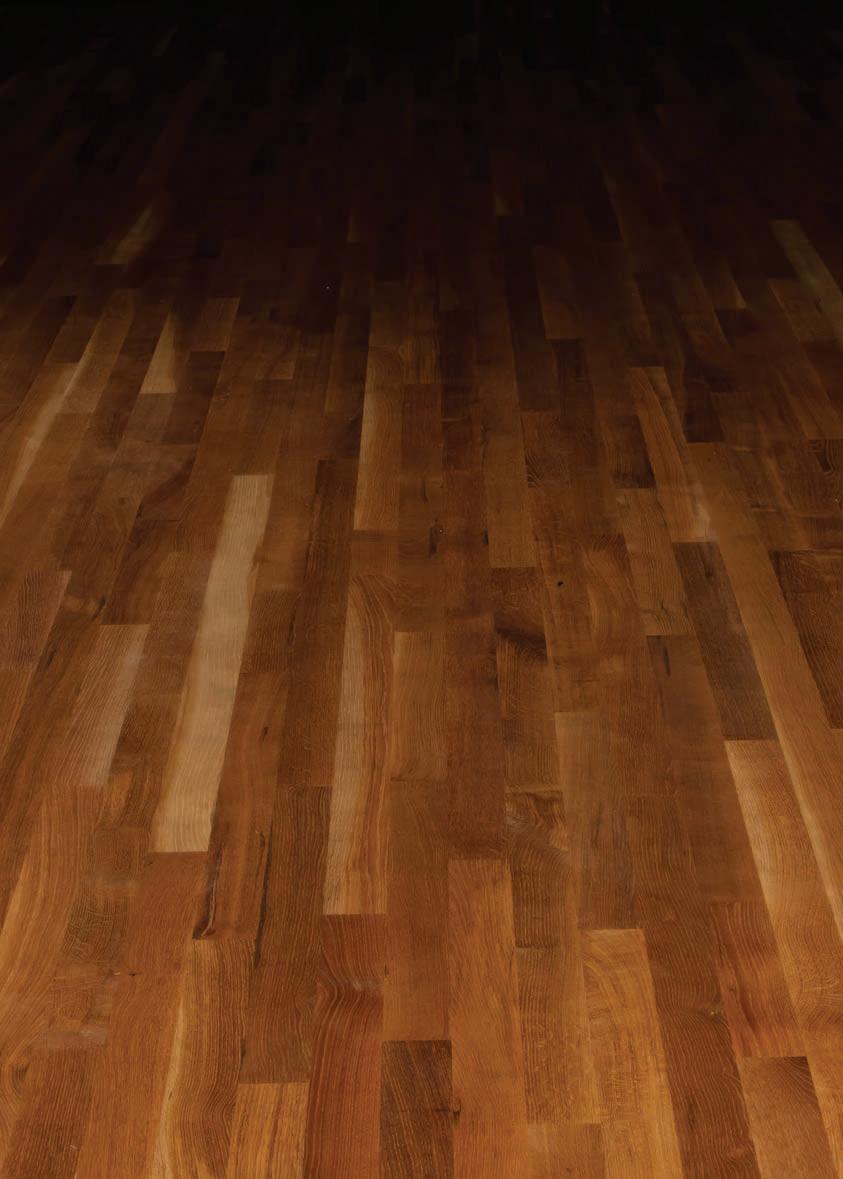
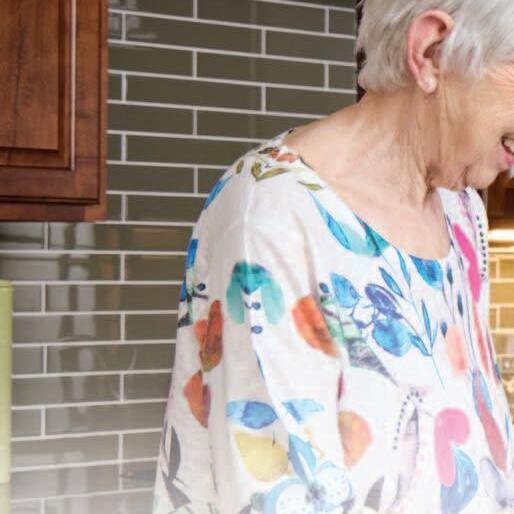
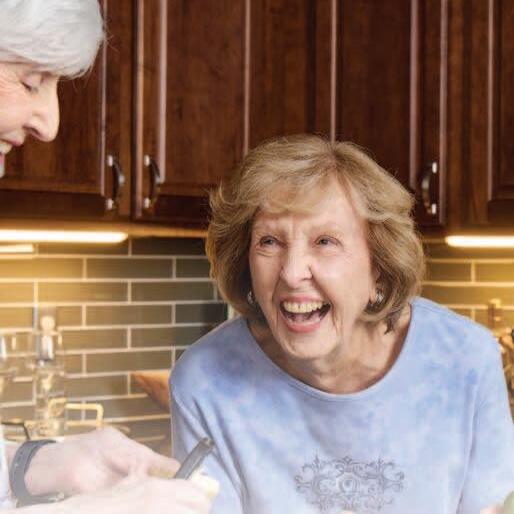





























MoneyMoney Law & Why so many people are afraid to retire
By Cyrus Bamji
Ready, set — wait just a minute!
This is what it looks like at the starting line of the largest-ever group of Americans who expected to be racing into retirement but are having second thoughts about leaving their jobs.
According to the Alliance for Lifetime Income (ALI) 2025 Protected Retirement Income and Planning Study,the only annual retirement study that surveys both consumers and financial advisers, 38% of consumers age 61 to 65 are considering postponing their retirement, while financial advisers say 28% of their clients have already delayed it.
The fear of retirement is happening just as our country is hitting Peak 65, when more people are turning 65 — about 11,200 each day — than at any time in history.
Triple whammy of financial worries
For a growing number of people, a trifecta of worries — inflation concerns, doubts about the viability and future benefits of Social Security and having sufficient savings — is enough for people to seriously reconsider quitting work.
The survey found:
• Inflation (67%) and healthcare costs (60%) are overwhelmingly the top worries
of consumers ages 45 to 75 when asked to identify the top financial concerns in retirement.
• 58% of those consumers are concerned that Social Security benefits will be reduced based on recent policy actions, and 52% report less confidence in Social Security compared to five years ago.
Given those growing doubts, 35% say they are considering claiming benefits earlier than planned, leaving significantly larger future payouts on the table than if they waited to claim.
More than half of Baby Boomers and Gen Xers (54%) are fearful of outliving their savings in retirement, up from 48% in last year’s survey.
The research shows retirement jitters are magnified for the 32% who are counting on Social Security as their sole source of guaranteed income in retirement.
Those without a source of protected income — a pension or annuity — are twice as likely (36%) to delay retirement than those without (17%).
Gloomy outlook
According to a recent economic analysis published by the Retirement Income Institute, two-thirds of Peak 65 consumers age 61 to 65 will be challenged to meet their fi-
nancial needs in retirement, let alone maintain their current standard of living.
More than half (52.5%) of these Peak boomers have assets of $250,000 or less. Given the likelihood of their living 20 or more years in retirement, they are most likely to exhaust their savings and be forced to rely mainly on Social Security, especially later in retirement when long-term care and healthcare costs are likely to be greater.
Already, 33% of retirees say they are spending faster than anticipated, making it no surprise that 47% say spending money in retirement gives them anxiety.
Confidence builders
So what can be done to help Americans feel more confident about retiring?
First, Congress needs to seriously focus on shoring up Social Security, so people don’t have to constantly confront headlines about the program’s trust fund going broke sooner than expected.
Rather than wait until the last minute to make the changes needed, policymakers need to move now to ensure workers can count on the promise of Social Security.
Second, financial advisers can help their clients through this period of uncertainty by taking their worries seriously.
The ALI survey suggests this is happen-

To avoid getting scammed, send unknown numbers to voicemail, freeze your credit and set strict privacy controls. See story on opposite page.
ing. Sixty-five percent of advisers said they changed their retirement planning approach over the past year to address client worries about market volatility, inflation and rising interest rates.
More than half of advisers said they are putting more client investments into annuities, which now ranks as the most popular change in investment strategy.
Finally, more people should seek help from a financial adviser. The ALI survey shows 70% of consumers working with an adviser are confident in their ability to create a retirement income plan — twice as many as those without professional financial help.
Unfortunately, just one in four people works with a financial adviser, according to YouGov data, and one of the biggest barriers to using an adviser is cost.
More people should be trying to find an adviser who can work with them for a fee they can live with, so they can gain the confidence they are lacking to land on a stable, reliable retirement plan.
This article was written by and presents the views of our contributing adviser, not the Kiplinger editorial staff. You can check adviser records with the SEC or with FINRA. © 2025 The Kiplinger Washington Editors, Inc. Distributed by Tribune Content Agency, LLC.
How to stay busy and happy in retirement
I have been retired from full-time work for 30 years now, and I probably have been more active during retirement than when I was working full-time.
Many individuals in retirement are bored because they have not found activities that give them satisfaction. Maybe that’s because they haven’t tried hard enough to find activities that challenge them.
personal finance for AARP members.
For more than 15 years, I volunteered in Orlando, Florida, with my wife as a state-certified court mediator helping individuals deal with debt collectors and other financial issues.

During my “retirement,” I have taught personal finance courses at local colleges, volunteered for Service Corps of Retired Executives (SCORE) advising small business owners, volunteered at AARP helping individuals file their taxes, and conducted seminars on
By Elliot Raphaelson
Of course, for the past 15 years, I have been writing a syndicated personal finance column. I encourage my readers to ask any questions they have regarding personal finance issues.
It is not unusual to receive 100 responses to columns, especially when new Social Security regulations or tax regulations change. I try to answer all the responses I receive.
Many readers ask me complicated questions that require some research. Fortunately, experts in the field are happy to respond to complex issues. For example, I receive many inquiries regarding retirement plans, and when I ask the experts at Ed Slott’s group for advice, they generally respond with an accurate answer the same day. Regarding Social Security issues, I work with several experts, and I receive prompt responses.
Find a hobby
It’s important to find activities to fill your hours. If you are interested in expanding your education, most local colleges are offering free or inexpensive courses for you to develop new skills and new hobbies.
One of my favorite activities is playing
contract bridge, which I have played for more than 60 years. One of my favorite partners just celebrated his 95th birthday, and he plays better than most of our opponents. Playing bridge will keep you young and help you maintain life skills you need. I prefer duplicate bridge because you only compete against players who receive the same cards as you do, so you don’t have the excuse of receiving poor cards. If you enjoy playing cards, you won’t find a more challenging game.
In most locations in the U.S., you can take courses at minimum costs. At the bridge club I belong to, for a $5 fee, you receive excellent training for several hours for beginners and intermediate levels. After the course is over, you can then play duplicate
Talk about scams and how to spot them
By Kimberly Palmer
When a scam artist called Cameron Huddleston’s mom to tell her to wire money to claim a prize, Huddleston had to intercept the calls. Her mom, who had been diagnosed with Alzheimer’s, was convinced she had to wire the money as soon as possible.
“That was a wake-up call for me. If you have any cognitive decline, you don’t see those red flags anymore,” said Huddleston, who is the director of education at Carefull, a service built to protect aging adults’ daily finances. She also wrote the book Mom and Dad, We Need to Talk, which is about how to have important conversations about money with your parents.
Scam artists often target older adults, partly because they have more wealth.
“From a criminal’s perspective, which target will give you the greatest returns: a broke 20-something who is struggling with student loans or a baby boomer with a couple million dollars of retirement assets?” asked Marti DeLiema, assistant professor of social work at University of Minnesota’s School of Social Work.
According to the Federal Trade Commission, consumers age 60 and older filed 467,340 fraud reports in 2021, reporting total losses of more than $1 billion. Overall, consumers age 60 and older are less likely to report losing money to fraud than those ages 18 to 59.
Savings Game
From page 12
bridge with experienced players for three hours for a $10 fee, with refreshments, five times a week in a friendly environment.
Once you become more experienced, you can attend regional and national tournaments to test your skill against experienced players. You may play against War-
BEACON BITS
But when they do report a monetary loss, it tends to be for more money, especially among those 80 and older. They had the highest median loss of all groups, at $1,500. The FTC reports that older adults are more likely than younger adults to lose money on scams involving tech support, prizes, sweepstakes and lotteries, and family and friend impersonation.
What you can do
Here are some steps fraud experts suggest taking to protect yourself, your parents or other older adults you care about:
Raise the topic. “Talking about scams can be one of the easier conversations because we’re all targeted,” Huddleston said. And you can use your own experiences or trending news to put it out there in a way that isn’t condescending.
DeLiema said explaining specific scams — such as a stranger reaching out over social media saying they want to be friends and then asking for money, or fake text messages claiming to be a grandchild who needs immediate help — can greatly reduce the chances that someone will fall for them.
“If you know about the scam first, you’re 80% less likely to respond,” she said.
Lean on anti-fraud tools. A few simple steps can help avert fraud, such as setting phones to send unknown numbers to voicemail, using a credit freeze, and setting
ren Buffett or Bill Gates, who are both avid bridge players.
Bottom line: There is no excuse to be bored in retirement. Your local paper will generally indicate ways to volunteer, learn new hobbies and expand your education.
Elliot Raphaelson welcomes your questions and comments at raphelliot@gmail.com.
© 2025 Elliot Raphaelson. Distributed by Tribune Content Agency, LLC.
RETIRED SENIOR VOLUNTEER PROGRAM
Join the Baltimore City Health Department’s Retired Senior Volunteer Program to volunteer at local schools, the aquarium and other community sites. Flexible schedules are available. For more information, call (410) 361-9400.
GILCHRIST VOLUNTEER PROGRAM
Gilchrist offers programs that allow you to provide compassionate support to hospice patients or offer bereavement companionship. Volunteer roles are available at inpatient centers or for home visits across the Baltimore area. Training is provided. For more information and to sign up, call (443) 849-8200.
MEALS ON WHEELS OF CENTRAL MARYLAND
Deliver meals and companionship to homebound seniors throughout Baltimore. Various roles are available, including meal packing and grocery assistance. For more information and to volunteer, visit mealsonwheelsmd.org or call (410) 558-0827.
IGNATIAN VOLUNTEER CORPS
Serve one or two days a week, assisting communities in need. Opportunities are available for those 50+ to use their skills and make a difference through partnerships with various community organizations. For more information, visit ivcusa.org or call (410) 752-4686.
stricter privacy controls on social media, said Amy Nofziger, director of fraud victim support for AARP. “These are things we should all be doing,” she said, adding that you can set this up for yourself at the same time.
It’s also relatively easy to sign up for financial account monitoring or to receive alerts for every transaction, Huddleston said. In some cases, it could make sense to allow adult children to also monitor those accounts, depending on the parents’ comfort level and support needs. [Ed. Note: EverSafe is one such service.]
Legal tools such as a durable power of attorney, a guardianship or a revocable trust can keep an older adult’s money safe from scammers, said James Ferraro, a vice president and trust counsel at Argent Trust Company, a wealth management firm headquartered in Ruston, Louisiana.
“If you have funded a revocable trust, then you have a vehicle in place where you can quickly step in if you suspect someone is taking advantage of your parents, be it a fake charity or the ‘your grandson is in jail in Mexico’ scam,” he said.
Know the warning signs. If an older adult is suddenly reluctant to talk about finances, has trouble paying for everyday expenses or has a high number of incoming phone calls or text messages, those are all
potential signs of fraud, said John Breyault of the National Consumers League, a nonprofit advocacy group.
Scammers are adept at creating a false sense of urgency, Breyault said, telling their targets that they must send funds immediately or the IRS or other authority will come.
“They are incredibly inventive,” he added, noting that methods and techniques are constantly evolving. The FTC reports that scam artists are even using artificial intelligence to mimic voices.
If fraud does occur, help the authorities track and prosecute it by reporting it, Nofziger said. Start by reporting to your local police department and using the FTC’s online reporting portal (reportfraud.ftc.gov). The AARP Fraud Watch Network Helpline has a toll-free number you can call: 1-877-908-3360. Avoid shaming. The shame and embarrassment people feel when victimized can make a stressful situation worse.
“Lead the conversation with kindness and empathy, not anger or belittlement,” Nofzigar said. “You can say, ‘I’m sorry this happened to you. Together we’ll figure out next steps. There is no problem that we can’t solve or recover from.’”
Reassuring words can keep older adults, and their money, safer from scam artists in the future. —AP/NerdWallet












Travel Leisure &
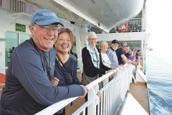
Turkey holds on to its ancient traditions
By Martha Steger
Lunch on the top floor of Hilton’s Conrad Istanbul Bosphorus hotel turned out to be a smart way to survey the city. From its windows I looked out on the Golden Horn, the major urban waterway and natural harbor of the Bosphorus Strait in Istanbul. These shimmering waters mark one of the continental boundaries between Asia and Europe.
I traveled to Istanbul last year for the Society of American Travel Writers meeting. Although the conference lasted only four days, I stayed six additional nights to see more of Turkey. It did not disappoint.
Like whirling dervishes, the Sufi dancers who are common in this country, Turkey mixes ancient and modern — spiritual and secular — rituals and routines with ease.
As the “crossroads of civilizations,” the East and the West, Turkey was part of the trade route connecting the Roman (and later, Ottoman) Empire to China.
I’ve long been fascinated with the Silk Road, a 4,000-mile route established in 130 B.C. and active until 1453. Traveling from Istanbul to other parts of the country, I discovered markets that would have traded wares such as spices, carpets and jewelry with other cities on the ancient Silk Road.
Old Town’s sights
Istanbul served as the capital of two great empires: first as Constantinople, the
capital of the Byzantine Empire (A.D. 3131453), and then as Istanbul, the renamed capital of the conquering Ottoman Empire (until Ankara became the capital of modern Turkey in 1923).
Today, impressive monuments to those past empires dominate its Old Town: the popular Hagia Sophia, the multi-domed Blue Mosque, and Topkapı Palace, home to the ruling sultans and their harems. These sites often have long lines for entrance except during the off-season, December through March.
With a guide, I visited the Blue Mosque, an Ottoman-era historical imperial mosque constructed between 1609 and 1617 during the rule of Sultan Ahmed I. Across town, Istanbul’s Grand Çamlıca Mosque is the city’s largest, with a capacity of 63,000.
Five times a day, the Muslim call to prayer echoes across rooftops. I found the live voices (never recorded) relaxing as I rushed to see as much as possible during my four days.
For those who answer the call to prayer, the city of 15 million people has more than 3,000 mosques to choose from — but devout Muslims simply stop where they are, prostrate themselves and pray. Although 70% of Turkey’s people declare themselves to be Muslim, no one knows the percentage of those regularly practicing their faith.
Most Turks wear Western apparel, but I noted some generational differences: A


30-something guide told me she never wears a burka, whereas her mother always wears the traditional black dress for Muslim women.
Throughout the country, I observed that similarities among faiths (Islam, Judaism, Christianity) are easier to see than the differences. Museums display objects from all three religions: a staff claimed to be that of Moses, a sword belonging to David and preserved footprints of Mohammed.
Sampling Turkey’s food
Walking the streets provided a glimpse of Istanbul’s character and culture as well as its cuisine. Pastry shop windows displaying honey-soaked baklava and vendors selling corn on the cob from carts looked familiar, but foods like gözleme (flatbread folded over cheese and spinach) were less so.
The cuisine throughout the country is Mediterranean-healthy with tasty seafood and grilled meats cooked with olive oil, veggies and lentils. Save room for dessert, though: Pairing a soft, chewy Turkish delight with the famously strong Turkish coffee is a must.
Turkey today remains one of the world’s largest producers and exporters of fresh produce (apricots, peaches, cherries), food items amply included on every menu.
In terms of shopping, I bought a few reasonably priced silk scarves to bring
home as gifts, as well as the blue-and-white glass “evil eye” amulets dangling from souvenir stands. These are said to be goodluck charms that ward off evil.
Some of my friends who were serious carpet shoppers hired guides who assisted them in finding the best places for what they wanted in their price range and having the purchase shipped home.
Trabzon and Ephesus
I chose to go early and stay late after my Istanbul conference. My Turkey trip, with its pre- and post-additions, was a 10-day trip of a lifetime (but it wasn’t inexpensive — approximately $6,500, even with every discount I could muster).
First I headed to Trabzon, a beautiful area on the Black Sea known for its tea plantations and the magnificent 4th-century Sümela Monastery, built into a steep cliff face almost 1,000 feet above the valley floor. I climbed dozens of steep steps (some with railings, some without), only to find at the top — where I had a spectacular closeup view of the monastery — that I had to descend steep steps to enter the monastery. Since we also had to descend to the valley floor via the same path, I decided not to go inside. Instead, I just breathed in the beautiful view from the top. A 54-year-old who went down told me I didn’t miss
Why take a trip with Road Scholar?
By Glenda C. Booth
Several years ago, after being robbed on a crowded subway traveling from the Barcelona airport to my hotel and left with no credit cards and only $300 in cash, I decided that as a white-haired senior, I should probably stop traveling alone.
For my next adventure, I signed up with Road Scholar and was met at the airport by a guide who escorted our group to a hotel and led us around western Iceland for nine days. Catering to those of us 40 and up, the travel organization planned the itinerary,
transportation, meals and speakers, including experts who gave talks on everything from history to geothermal power generation.
Road Scholar is the brainchild of two New Hampshire men who enjoyed Europe’s hostels in their youth. In 1975, 53year-old Marty Knowlton and his 36-yearold friend David Bianco launched a program for older travelers who could take summer classes while staying in empty dormitories. Thus, they birthed Elderhostel.
BALTIMORE VETERANS DAY PARADE
Honor our veterans at Baltimore’s annual Veterans Day Parade on Sat., Nov. 8. The parade begins at noon from the Washington Monument, 699 N. Charles St., then will proceed down Baltimore and Gay Streets, ending at War Memorial Plaza. For more information, call (443) 615-3363 or email MayorsOffice.Event@baltimorecity.gov.
FREE ONLINE CLASSES FOR EVERYONE
Get to know Udemy, a platform offering free courses and training for all interests. Bring your Enoch Pratt Free Library card and PIN, along with a tech device (tablet, smartphone or laptop), and a librarian will show you how to access the service. This free event takes place on Wed., Nov. 9 at 11 a.m. at Keswick, 700 W. 40th St. Register at bit.ly/Udemytraining. For more information, call (410) 662-4363.
Senior Apartments Age 55 or Better LIVE WELL FOR LESS Roland View Towers
• One- and Two-Bedroom as well as Efficiencies
• Rents from $820 for efficiency, $1,015 for 1-bedroom, and $1,285 for 2-bedroom Utilities Included!
• 24/7 on-site Maintenance and Reception Desk
• Beauty/Barber Shop on premises
• Only 2 blocks from Hampden’s ‘The Avenue’
To schedule a personal tour call 410-889-8255 St Mary’s Roland View Towers
Fast forward 50 years, and Elderhostel has evolved into the nonprofit organization Road Scholar. Each year 100,000 participants sign up for its educational travel programs in every U.S. state, 100 countries and aboard ships.
Dorm rooms are history; today’s Road Scholars stay in conventional, mid-priced lodging. Yet the company’s recipe for success is the same.
“Road Scholar learning adventures deepen connections among people, cultures, history, environments and the arts. Road Scholar is a tonic for health and wellbeing as we grow older,” said James Moses, Road Scholar’s president and chief executive officer.
Never too old to learn
Most people choose Road Scholar to learn something new. The guides, called group leaders, are all locals with experience in the region and culture, and guest lecturers are often retired academics.
One of the guides, who co-led my trip through the Panama Canal and its environs, said, “We cater to the academically inclined. That’s the Road Scholar philosophy. Even the local food helps customers understand the culture.”
For others who sign up for a trip, the travel companions are a plus. Many travel-



ers enjoy learning from each other.
“It’s the combination of lectures and music and being with other people that is very educational,” said Joan Rubin of Silver Spring, Maryland. “The people are very interesting. We have wonderful discussions.”
And you don’t have to bring a spouse, partner or friend along. Road Scholar offers “Go Solo” trips which are group trips exclusively for solo travelers.
Solo travelers on most other group trips pay a little more for a single room, but Road Scholar can match a single person with a roommate on request. These tours are not intended nor marketed as potential romantic adventures.
A slower pace
On a Road Scholar trip, the pace is unhurried, and guides are patient with slow walkers. Pre-trip materials describe each day’s physical activity level and indicate places without elevators. Listening devices are available.
“They are very caring,” said Pennsylvanian Gene Samit, noting that when another company lost his luggage, “they didn’t care, but Road Scholar does.”
Most people make their own travel
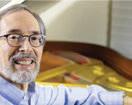












Road Scholar
From page 16
arrangements online on the Road Scholar website. The one feature of their sign-up system that gets resounding kudos is the ability to reach and talk to a real person — not an anonymous machine — about almost any travel detail.
Road Scholar will make some flight reservations for international programs. They have pre-negotiated fares with several airlines.
Hotel prices are mid-range. Food is usually locally sourced, but meals are not necessarily gourmet.
“It’s not luxury. Don’t expect Chateaubriand,” said Craig Henry, who went through the Panama Canal with Road Scholar last spring. But, he said, “I didn’t come for that.”
Trip costs
Prices range from $850 up to $90,000 for
Turkey
From page 15
anything. The refurbished artwork on the walls, she said, included “an angel that looks suspiciously like Cary Grant.”
After the conference, I traveled to Ephesus, the most important Greek and Roman city in Ionian Asia Minor and a major archaeological site. To make the flight worthwhile, I expanded this trip into a four-night visit to the seven “churches” (i.e., communities) that St. John the Apostle addresses in the New Testament’s Book of Revelation.
While Ephesus is one of the world’s great religious and archaeological sites, I found the church at Sardis just as interesting,
BEACON BITS
Nov. 21
private jet trips. According to Road Scholar’s website, its trips are at least 20% cheaper than comparable tours by commercial companies. The organization’s nonprofit status makes prices lower than many other companies.
“It’s a good value for your dollar,” said Samit, a photographer.
The trip payment covers most meals and all lodging, tips, taxes, lectures, group expeditions and listening devices.
Every program has medical emergency coverage, including medical evacuation, and travelers can also purchase trip insurance with cancel-for-any-reason coverage.
A few downsides
The average age of Road Scholar travelers is 72, so many trips skew to the older crowd. Although at least one person on the reservation must be over 40, it offers family programs for parents, grandparents and children.
though it’s nowhere near as large. Unlike Ephesus, which was abandoned in the 15th century, Sardis remains a thriving, bustling city, with traffic circling the ancient section all day, every day. There, as in Istanbul, the country maintains its connection to its past as it keeps up with modern times.
If you go
Round-trip flights to Istanbul start at $660. To fly within Turkey, check rates at Pegasus Airlines, AnadoluJet or SunExpress.
At Hilton’s Conrad Istanbul Bosphorus, a five-star-hotel, room rates are $150 a night and up. Prices may be lower from December to March. January is the coldest month in Istanbul, with temperatures in the high 30s to low 50s.
SENIOR VETERANS’ ISSUES DISCUSSION
The Baltimore County Association of Senior Citizens Organization invites you to share your concerns with Senator Benjamin Brooks and Delegate Nick Allen on Fri., Nov. 21 from 10 a.m. to noon at the Randallstown Community Center, 3505 Resource Dr., Randallstown. Light refreshments and networking begin at 9:30 a.m. For more information, contact Beth Wiseman at (410) 484-6866 or bwiseman84@hotmail.com.

Some travelers would prefer more nightlife, but the company’s emphasis is on education.
“Drinking and clubbing is not what it’s about,” according to Kelsey Perri, Road Scholar’s director of public relations.
That’s just fine for Paul (last name withheld for privacy), a retired Pennsylvania veterinarian who has taken 29 trips with the organization and is planning three more in 2026.
“My fellow travelers are not phone-obsessed,” he said. “I don’t smoke or drink, so it’s my kind of crowd.”
Of course, traveling with a large group
can mean long lines for hotel check-ins and meals. Group sizes vary, and pre-trip descriptions indicate whether the group is small, (maximum of 24); medium (25 to 40); or large (over 40 people). If the group is large, though, leaders usually break it down into smaller units.
Participants usually have to carry their own luggage, so only pack what you can carry yourself. Bring only what you need — and a spirit of adventure.
“To travel with Road Scholar,” Arlingtonian Patricia McCarthy said, “all you need is an open mind.”
For a list of trips, see RoadScholar.org.























Arts & Style

In some ways, stick shifts are best. See story on p. 20.
Quilts of Valor honors Maryland veterans
By Elias M. Taye
On October 18, about a dozen veterans gathered at the American Legion in Sykesville, Maryland, to receive a handmade quilt — a gift of gratitude for their service, sacrifice and resilience.
For Eldersburg resident Pam Adams, who leads the newly formed Eldersburg Quilts of Valor group, the moment marked a culmination of months of work, countless yards of fabric and a deep commitment to honor those who have worn the uniform.
“Each quilt carries love, time and respect,” Adams told the Beacon. “Each veteran we honor has a story, and this is the least we can do for them.”
A national nonprofit
Quilts of Valor was founded in 2003 by Delaware midwife Catherine Roberts, whose son served in Iraq. Roberts had a dream in which she watched a demoralized soldier find comfort in a quilt. With that image in mind, she created a foundation, and that November, her first quilt was presented to a wounded soldier at Walter Reed Army Medical Center in Washington, D.C.
Today Quilts of Valor has become a national group with more than 12,000 volunteer quilters in local chapters, each with between two and 50 members. So far it has awarded more than 400,000 free quilts across the country.
Adams’ journey to establish a local chapter in her town of Eldersburg, Maryland, began five years ago in an unexpected place: aboard a Carnival cruise ship. Her husband, Buck Sgt. Donald Adams, served in the U.S. Army from 1977 to 1980.
“My husband was selected to receive a quilt at the ship’s military appreciation event,” Adams said. “He looked at me and said, ‘You quilt ’ That was the beginning.”
At first, Adams was a “group of one,” sewing from start to finish by herself. She had already made and given away about 65 quilts when she realized she had started something.
A conversation at the local American Legion prompted her to make her work official. Quilts of Valor explained that unless she became a formal group, her name wouldn’t appear in their directory.
“So, I reached out to people in the community and said, ‘Hey, is anybody else interested in quilting?’”
The response was overwhelming. In August, Adams and 20 other women officially launched the Eldersburg Quilts of Valor group. In just five weeks, they completed 27 quilts.
‘Somebody
cares’
The national foundation’s motto is “Quilts = Healing.” For Adams, the phrase rings true every time she hands over a quilt.
“When you recognize a veteran for their service, it puts a smile on their face,” Adams said.
“Especially those from earlier wars like Korea or Vietnam. Sometimes they don’t want recognition, but when they receive it, you see the gratitude in their eyes. It makes them feel like somebody cares.”
Each quilt measures approximately 59 by 65 inches and is made from high-quality cotton fabrics in patriotic patterns. It requires about two weeks of steady work to complete and costs between $150 and $200 to produce.
Adams’ voice softens when she shares stories of past presentations. For instance, one woman, whose brother had been killed in the Vietnam War, sponsored a quilt for another Vietnam vet. The sister couldn’t bring herself to present the quilt, but her silent tribute was powerful.
“That touched me deeply,” Adams said.
A special day
Among the 11 recipients on October 18 was a 94-year-old Korean War veteran — the first from that war that Adams has been able to honor.
Others included leaders of the American Legion and local veterans from her church.
The ceremony highlighted not just the diversity of service — from privates to brigadier generals — but also the diversity of contributors nationwide. One quilt was shipped from Alabama, made by someone who couldn’t attend in person but wanted to contribute.
Plenty of work to do
Maryland now has seven Quilts of Valor groups, stretching from Cumberland to the Eastern Shore. Adams’ group fills a gap in the central part of the state, covering Carroll, Baltimore, Howard, Anne
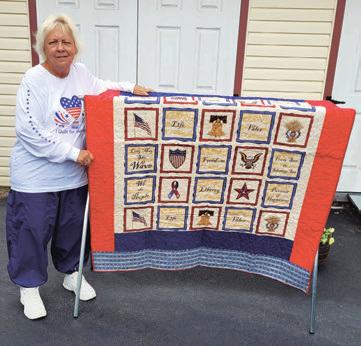
Arundel and Frederick counties.
As the state coordinator, Adams oversees requests, often deciding whether her team or another group is best positioned to respond.
“Right now, I have 43 quilts to make between now and the end of the year,” she said.
Her volunteers meet twice a week for “sew days,” where they cut, stitch and share stories. “It’s really become a community effort,” Adams said.
They gather at the American Legion, which provides space for the quilters.
“Back in August, we offered the free use of our hall to Pam Adams and her volunteers to bring in their sewing machines, materials, irons and skilled hands to assemble the quilts and prepare for the ceremony,” Matt Livesay, spokesperson for the American Legion, said in an email.
“The mission of Quilts of Valor — ‘To cover service members and veterans touched by war’ — meaning a ‘thank you’ for your service and sacrifice, directly coin-
cides with The American Legion motto, ‘Veterans Strengthening America,’” he said.
Donations welcome
For Quilts of Valor Eldersburg, the biggest obstacle isn’t time or energy; it’s the cost. Batting alone can run $380 to $400 per roll, enough for only eight quilts.
“It adds up quickly,” Adams noted.
While she has personally funded nearly 90 quilts, she acknowledges that her group needs community help. She launched two fundraisers, selling embroidered flags and shirts with the slogan, “I support those who quilt for veterans.”
Adams envisions a long-term presence for Quilts of Valor in Maryland.
“We want to honor as many veterans as we can,” she said. “This work is important, and as long as I can, I’ll keep doing it — even if I have to fund [the quilts] myself.”
To donate money or patriotic fabric to Eldersburg Quilts of Valor, email pamela.adams@qovf.org or call (443) 802-3794.
How to find balance this holiday season
By Tom Swisher, M.D.
As autumn progresses toward winter and the holiday seasons approach, many people in Howard County look forward to traditions that warm the heart: family gatherings, festive meals and the joy of reconnecting with loved ones.
Yet while the holidays bring moments of light, they also come with challenges — especially for those navigating grief, changes in family roles or the quieter realities of aging.
For older adults in particular, the season can stir deep memories. A familiar song may remind us of those no longer at the table. Busy schedules and crowded stores can feel overwhelming rather than energizing. And sometimes, expectations — our own or others’ — leave us stretched thin.
Still, there are ways to embrace both the joys and the challenges. A few simple practices can help:
• Keep traditions, but adapt them. If hosting a large meal feels daunting, consider a smaller potluck or gathering at a
BEACON BITS
Nov. 3+
local restaurant. The connection matters more than perfection.
• Honor those we miss. Lighting a candle, displaying photos, or telling stories can make absent loved ones part of the celebration.
• Step away from the holidays. Perhaps planning a trip away for the holidays this year is just the escape you need. A sunny beach or a new environment where relaxation and fun are the primary goals can serve as a distraction from the blues that a recurring holiday tradition might evoke.
• Reach out. Loneliness can weigh heavily this time of year. Calling a neighbor, joining a faith service or participating in a community group can renew a sense of belonging.
• Be there for others. Recent research suggests that helping others benefits helpers by boosting their happiness, reducing stress, and increasing life satisfaction.
Practice special acts of kindness, such as writing anonymous thank-you notes,
CELEBRATING JEWS IN THE ARTS
This three-part series, hosted by experts, highlights how Jewish performers have influenced music, visual arts and comedy. It takes place at Beth Israel Congregation from 7 to 8:30 p.m. on Monday, Nov. 3, 10 and 17. The cost is $10 per lecture or $25 for all three for members and $15 per lecture or $36 for all three for non-members in advance; at the door, it’s $15 per lecture for members and $20 for non-members. For more information and to register, visit bit.ly/celebratingJewishperformers, email gmiller@bethisrael-om.org or call (410) 654-0800.


leaving encouraging messages in public spaces, or sharing a kind thought with the clerks and office workers you encounter (or just hand them a mini chocolate bar).
• Give yourself permission to rest. The holidays do not need to be a marathon. Quiet moments — walking in your neighborhood, enjoying the lights on 34th Street, or simply savoring a cup of tea — are part of the season’s gift.
The holidays can remind us that family, friendship and community are what en-
dure. As we move through the often hectic weeks ahead, let’s allow joy and tenderness to sit side by side, trusting that even in the busiest season, there is space for peace.
Dr. Tom Swisher is the author of Family Dynamics: Transforming the Hidden Patterns That Shape Us, available on Amazon. He is a professor emeritus in Stevenson University’s Counseling & Human Services Department and maintains a private practice in Ellicott City, Maryland.
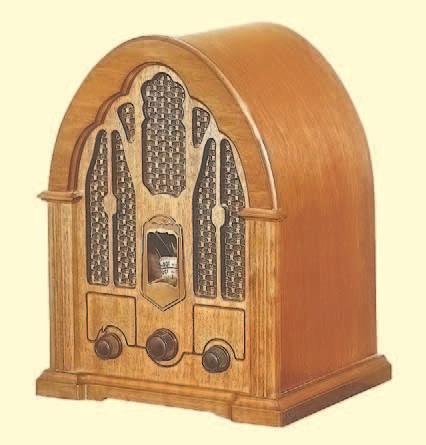





























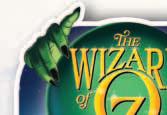









































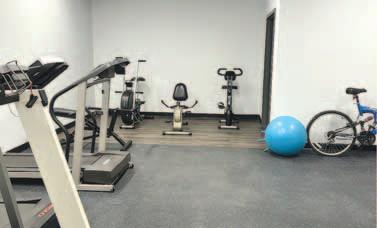












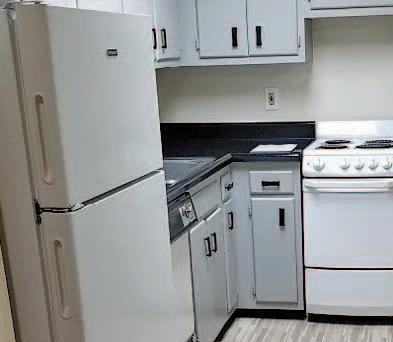






























Standard-shift cars are kryptonite for carjackers
It happened again. Exactly as it has happened before.
Three teenagers tried to carjack a fancy foreign convertible in the Maryland suburbs. After demanding the keys, and getting them, they piled in.
One teen took the wheel. And then…
He couldn’t figure out how to handle the manual gearshift.
Because it didn’t say ParkReverse-Neutral-Drive-Low.

It was four on the floor. Which required stepping on the clutch. Which he had never done before.
By Bob Levey
So the carjackers ran off, and the car was never stolen. That was a triumph of sorts.
But the biggest noise was not the footsteps of the escaping kids. It was the chortles of seniors who read about the incident. For them, standard shift used to be standard.
Until the mid-1950s, most cars sold in America lacked automatic transmission. You started the engine by placing the gearshift in neutral. But to go anywhere, you needed to step down on the clutch, shift the gear lever, and then carefully coordinate your two feet and your right hand.
Back off the clutch with your left foot just-t-t-t a little bit…Give it just the properr-r-r amount of gas with the right foot… Adjust…Coordinate…
And once you were actually moving, get ready to stomp down with the left, shift to a higher gear with your right hand and repeat as necessary.
If all your limbs weren’t working in perfect harmony, you wouldn’t go. Or more likely, you would buck, shudder, lurch, perhaps stall. And then succeed. Barely.
If that sounds like too tricky a ballet for today’s young drivers, that’s exactly why the Maryland carjacking failed.
We can ascribe that happy-ish ending to poor driver’s education. Today’s driver ed classes don’t even mention standard transmissions. Why should they? More than 97% of cars sold in America in 2024 had “PRNDL” displayed somewhere prominent, according to industry publications.
So it remains for us fossils to recall the wonders of grinding gears — and the occasional harrowing moments that came along for the ride.
Picture your humble and obedient columnist as a 20-something (yes, I know, it’s hard). He was visiting friends in San Francisco. He had held a driver’s license for some six years. He had considerable experience with standard shift. He was piloting a standard-shift Chevy. He was sure he was up to any challenge.
But San Francisco doesn’t have hills. It has HILLS.
There you are at a red light on a 25degree grade. The light changes to green. And you?
You roar the engine. You begin to slip backward.
You roar harder. You let the clutch out a little more than you ordinarily might. You slip backward some more.
Yikes!
Luckily, just before you smack into the car behind you, success!
Does that memory linger? You’ve just gotten my answer to that question.
And what about the time you were confronted with a snowstorm in Chicago? The white stuff was halfway up the hubcaps. But never fear. Our hero would get his car full of college students safely back to the dormitory.
He almost didn’t.
Light turns green. Snow is blowing and drifting. Back off the clutch. Give it some gas.
But then, the car begins to slide sideways.
Whoops! Back off the gas. Step on the clutch.
No! That disengages the gears! Makes the sliding worse, not better!
So repeat what you did in the first place! Meanwhile, don’t slide into the guy next to you!
Yikes!
All these calculations took place in less than two seconds. Somehow, I kept control of the car. Somehow, we got to our destination safely.
Hills and snow would have been challenging with automatic transmission, too. But for those of us who have been driving for more than 60 years, PRNDL spells WIMP.
We toughed it out. We prevailed. We actually drove our standard-shift cars. We didn’t just aim them.
And yet, we oldies don’t know everything about motor vehicles.
I rented a car at an airport recently. I found it on the lot. I hopped in. The key sat on the passenger seat. But where was the ignition slot?
I hunted. I used some saucy language. I came up empty.
I returned to the rental counter and announced that there was something wrong with the car I had been assigned.
The salesperson — young, of course — did not smirk. He simply walked me back to the car and pointed to the button that starts it.
I had never seen a push-button starter before.
As I shifted into DRIVE and moved off, I had a vagrant thought.
No one my age will ever carjack a vehicle. Because they might not know how to start it.
Bob Levey is a national award-winning columnist.

BEACON BITS Nov. 9
STORYTELLING PROGRAM AND EXHIBIT
This public program invites Jewish Marylanders to share family histories by presenting three photographs, telling the stories behind them, and contributing to the larger narrative of Jewish life in the state. It takes place on Sun., Nov. 9 at 1 p.m. at the Jewish Museum of Maryland, 15 Lloyd St. and supports the museum’s exhibit Picturing Past & Present: Sharing Our Stories. Open to all, but you must register at bit.ly/sharingstoriesinMD. For more information, email info@jewishmuseummd.org or call (410) 732-6400.


NO MORE CLEANING OUT GUTTERS. Guaranteed! LeafFilter is the most advanced gutter protection for your home, backed by a no-clog guarantee and lifetime transferrable warranty. Call today 1-855-977-6078 to schedule a FREE inspection and no obligation estimate. Plus get 20% off! Seniors and military save an additional 10%. Restrictions apply, see representative for warranty and offer details.
BECOME A PUBLISHED AUTHOR. We want to Read Your Book! Dorrance Publishing-Trusted by Authors Since 1920. Book manuscript submissions currently being reviewed. Comprehensive Services: Consultation, Production, Promotion and Distribution. Call for Your Free Author’s Guide 1-833-9920110 or visit dorranceinfo.com/beacon CONSUMER CELLULAR - the same reliable, nationwide coverage as the largest carriers. No long-term contract, no hidden fees and activation is free. All plans feature unlimited talk and text, starting at just $20/month. For more information, call 1-833-742-1303.
GET DISH SATELLITE TV + INTERNET! Free Install, Free HD-DVR Upgrade, 80,000 On-Demand Movies, Plus Limited Time Up To $600 In Gift Cards. Call Today! 1844-560-5837.
DIRECTV - All your entertainment. Nothing on your roof! Sign up for Directv and get your first three months of Max, Paramount+, Showtime, Starz, MGM+ and Cinemax included. Choice package $84.99/mo. Some restrictions apply. Call DIRECTV 1-888-572-4953.
PAYING TOP CASH FOR ANTIQUES AND COLLECTIBLES. House calls made with prompt, courteous service seven days a week and 25 years of experience! Buying toys, trains, militaria, glassware, advertising merchandise, paper items and much more! Contact Mason or Megan at: 443-306-8816.
From page 1
Myers Team provides itemized receipts to submit for reimbursement from an insurance company, but that’s not guaranteed. The cost ranges from $300 to $1,000 out of pocket; however, the Vinnie Myers Team has a nonprofit organization, the Pink Ink Project, that can cover the cost of the tattoos for anyone in need of financial assistance.
About 15 years ago, Myers considered giving up the cancer-related part of his practice and focusing on traditional tattoos.
Thirty minutes later, his younger sister Lauren called to say she had been diagnosed with breast cancer at age 46 (it’s now in remission). That’s when he made the decision to make this type of work a priority.
Clients remember him
Beckie Gladfelter, an educator and resident of Chesapeake Beach, Maryland, saw Myers on national television once, not
BEACON BITS
Nov. 7
FREE PIANO CONCERT
knowing that someday she would meet him.
“Before I had breast cancer, I remember watching a news story on ‘Good Morning America’ about Vinnie and his story,” she said in an email.
“When I was diagnosed with breast cancer and had completed my treatment, I pulled the memory of Vinny’s ‘GMA’ coverage to ask…about using Vinnie Myers as my nipple tattoo artist.”
Gladfelter’s healthcare team was familiar with Vinnie’s work and highly recommended him.
Myers, Gladfelter said, “took my plainlooking Barbie boobs and made them look realistic.”
A family business
Myers, now 63, has no plans to retire. But he’s already passing on his skills to the next generation.
His daughter, Anna, who grew up around the shop, now works alongside him, running the business, which includes the Finksburg
St. David’s director of music, pianist Douglas Buchanan, performs Beethoven’s Sonata No. 3 in E Major and a new piece on Fri., Nov. 7 at 7:30 p.m. at 4700 Roland Ave. The event is free, with donations accepted at bit.ly/stdavidsmusicdonation. You can also watch the concert live at youtube.com/@stdavidsbaltimore. For more information, visit bit.ly/StDavidsconcert.

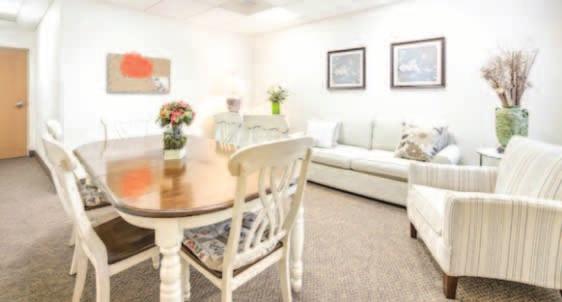

Warren Place Senior Apartments in Cockeysville, Maryland, is a 62+ senior community in a convenient location just minutes away from shopping centers, banks, pharmacies and restaurants on York Road.

• All Utilities Included
• On-site Parking
• Laundry on Every Floor
• Rents are $1,222–$1,467
• Elevators
• Light Rail and Bus Stop Nearby
studio and another in Baltimore County.
As an arts major at Towson University, she is now trained in the art of 3-D nipple tattooing. It took her more than 18 months of focused training to become proficient.
“You can’t learn this in a weekend workshop,” Myers said firmly. “Every case is different — radiation damage, scar patterns, skin texture. You need enough experience to walk into any situation and know how to handle it without making things worse.”
Although Myers has tattooed a few men with cancer and some transgender clients,
women make up the majority of his clientele. Most of these women are between age 45 and 55, but he’s had clients approaching age 80 who seek out his work.
In addition to locals, cancer survivors travel great distances to Little Vinne’s Tattoos. In fact, they come from all over the world — as far as New Zealand — to get inked.
“It’s been really quite fun,” Myers said. “You never know who’s walking in the door.”
Visit the Vinnie Myers Team website at vinniemyersteam.com or call (410)




































































• Small Pets Welcome Call our leasing office today for an appointment and to hear about all the fantastic details!* 410-666-1030 Email: WarrenPlace@gradymgt.com Website: WarrenPlaceSeniorApts.com
Steps away from Cockeysville Senior Center to fit with your active lifestyle. We are a pet friendly community!

*Income restrictions 10535 York Road • Cockeysville, MD
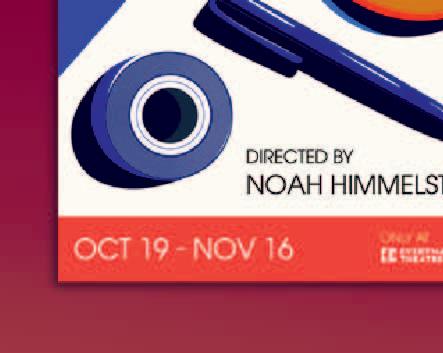



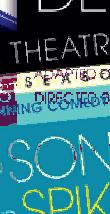







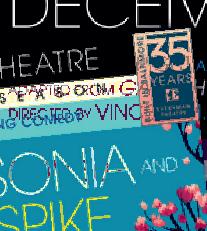















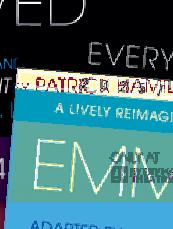



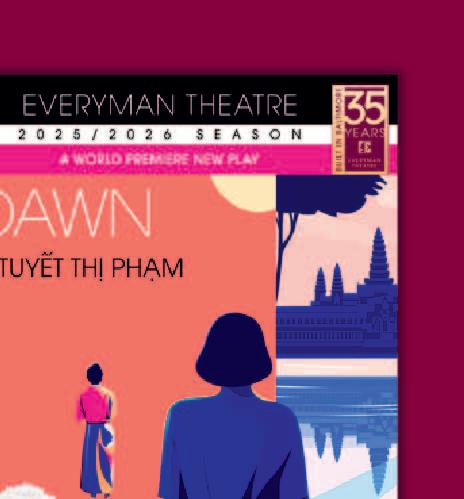





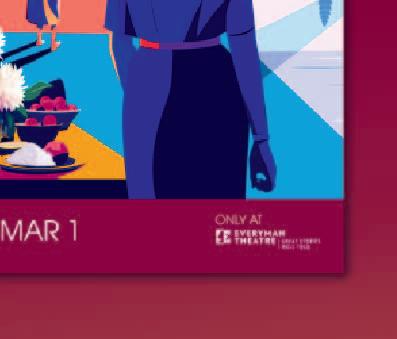



































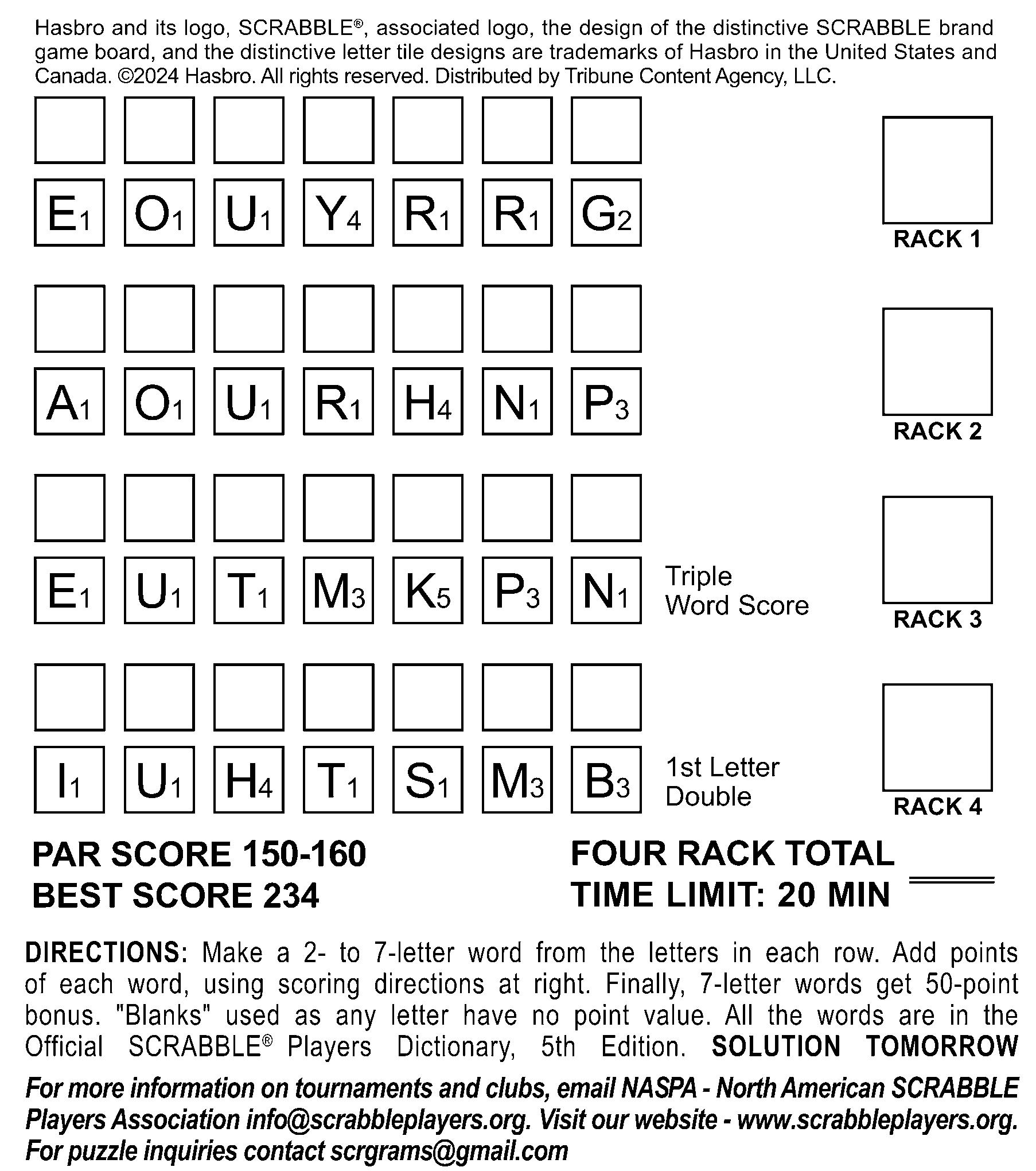
Scrabble answers on p. 21

Crossword Puzzle
Before And By Stephen Sherr
Across
1. Indication of hyperventilation
5. Director Paul Thomas Anderson, to cinephiles
8. Losing streak
13. Big birds
14. Spill the beans
15. Inexpensive wind instrument
16. Above-water parts of icebergs
17. End a flight
18. Moron
19. Obsessively focused
22. Letters often at the top of a Winter Olympics medal scorecard
23. Munched on lunch
24. A thou thous
25. Dir. from London to Paris
28. Use the panic button
30. Unit of social media success
31. Schoolboy
32. An endless series of problems
36. Rob, of the Brat Pack
37. They may be frozen at a fertility clinic
38. It may be frozen at a convenience store
39. CPA or MD, for example
44. “It’s just ___ word vs. his”
45. “Heavens to Betsy!”
46. Interpret palms or tea leaves
47. @@@
48. X, Y, Z, or Alpha
49. Part of a Vegas showgirl outfit
50. “Click here to ___ out of future messages”
53. It may be thrown at a failing investment
56. Make the wedding dress wearable for the tenth anniversary
59. Instrument, typically with 23 holes
60. Hockey haven
61. Make up for
62. “I got ___ on the top bunk!”
63. Section of a hand, to an orthopedist
64. Maternity, psych, and surgical
65. Place that’s fine for swine
66. Half of all binary digits
Down
1. “Hurry; the bus doors are closing!”
2. Acid in proteins
3. Invisibility, stretchability, flammability, and strength, for Four
4. “Hey, buddy...”
5. Boeing 737 or Airbus A320
6. Drink available on every Gemini mission from IV to XII
7. Gut-related
8. Pancake cooker
9. Classy female
10. Top-selling machine gun of the 1970’s
11. Comment from a moon-jumper
12. It won’t boil if you watch it
14. Callously indifferent
20. Reheated meat and potatoes
21. The “Just Do It” company
25. Burger topping
26. More like Martin than Lewis
27. A cube has 12
29. Letters that follow comm- and comp-
30. “‘Tis better to have ___ and lost...” (Tennyson)
32. “Hi,” in HI
33. Santa’s reindeer chorus
34. Mars and Venus (but not Apollo)
35. ___ double (reach second base)
40. Subtracts a number from zero
41. Like expensive whiskey
42. Vanishes, over the centuries
43. Word that proverbially lacks an “i”
49. Prize for winning last-place
51. Like ziti, but with angled ends
52. Youngsters
53. Turn pages into a book
54. First bio that includes both DOB and DOD
55. Rice-like pasta
56. Precooked
57. Sort option on travelocity.com
58. In support of the resolution
CLASSIFIEDS
The Beacon prints classified advertising under the follow ing headings: Business Employment Opportunities; Caregivers; Computer Services; Entertainment, Financial, For Sale; For Sale/Rent: Real Estate; Free; Health; Home/ Handyman Services; Legal Services; Miscellaneous; Personals; Personal Services; Vacation Opportunities; and Wanted. For sub mission guidelines and deadlines, see the box on the right.
CAVEAT EMPTOR!
The Beacon does not know ingly accept ob scene, of fensive, harmful, or fraudulent advertising. How ever, we do not investi gate any advertisers or their products and cannot accept responsibility for the integ rity of either. Respondents to classified ad vertising should always use caution and their best judgment.
EMPLOYMENT & REAL ESTATE ADS:
We will not knowingly or intentionally accept advertising in violation of federal, state, and local laws prohib iting discrim ination based on race, color, national origin, sex, familial status or handicap in connection with employment or the sale or rental of real estate.
DRIVERS WANTED / GREAT FOR RETIREES / Locally 35-year-old family-owned company is looking for dependable people to make delivers to businesses. Make your own schedule Call (410) 234-3100 for more information and schedule an appointment to apply.
SOFTWARE DEVELOPER — COLUMBIA, MD. Gather requirements, analyze and assess current processes, identify and document improvements, interpret business needs and translate them into technical requirements; research identify alternative solutions; design, develop, implement, test maintain applications following SDLC processes methodologies; provide support, performance tuning and bug fixes to existing applications; troubleshoot development and production issues; consult with users to resolve development/implementation issues. Sal: $181,000.00/yr. Travel (approx. 60% to 80%) reloc possible to unanticipated locations throughout the U.S. Work loc: Columbia, MD. Mail res: Unify Solutions, Inc., 5457 Twin Knolls Rd., Ste 405, Columbia, MD 21045.
DB ADMINISTRATOR: MS in computer related. Knowledge in Adv. DB Design Analysis, Data Modeling, DB Tech, Operating Syst, Agile, Understanding of Vulnerabilities various DB Mgmt Platforms. ($97,350/yr with std benefit). Resumes to: Attn: HR, CV Inc., 610 Professional Dr. #108, Gaithersburg, MD 20879.
MOBILE HAIR & NAIL SERVICES - WE COME TO YOU. Professional Licensed Hair Stylist. Women and Men’s Services All Hair Types. Cuts, Styles, Roller Sets, Color, Perms, Men’s Cuts Facial Grooming, Manicures more. Call 410-415-1760.
BRINGING HEART TO HOMECARE 24
Hours At Loving House Homecare, we believe every smile, every moment matters. Our passionate caregivers go beyond the ordinary to create a nurturing, joyful environment for your loved ones. It’s more than care it’s a heartfelt commitment to dignity, happiness, and love. Let us transform your home into a place of comfort and trust. Call now and feel the difference! 410870-7108.
PATIENT, PRACTICAL, PERSONAL. can help you get comfortable and confident using your smartphone, tablet, laptop, printer, TV, Alexa, etc. 20+ years experience with all skill levels, PC, Mac. Julia: 443-436-2612, computercoachbaltimore.weebly.com
SAVVY SENIOR TECH HUB - Friendly 1:1 tech support designed for seniors! Learn smartphones, tablets computers at your own pace. Patient instruction, affordable rates. Don’t let technology intimidate you master it! Call Stefan at 443-281-3638.
PRIME TIMERS OF BALTIMORE is a welcoming community for mature gay and bisexual men. The Prime Timers offer social activities that cater to the mind and body. We meet for dinners, a book club, potlucks, hiking, tours, bowling, and more! Join us! Visit baltimoreprimetimers.org or email info@ptbalto.org for info.
THE MARKETS OF CRAFTS GALORE! Shop, Eat, Mingle. Handmade goods, holiday gifts, and food. 9/6, 10/4, 11/1, 12/6. Free public admission 9:30am-2:30pm. Held by Vendor Members Group at Timonium UMC: 2300 Pot Spring Road, Timonium MD. www.VendorMembersGroup.com
WESLEY FINANCIAL GROUP, LLC Timeshare Cancellation Experts. Over $50,000,000 in timeshare debt and fees cancelled in 2019. Get free informational package and learn how to get rid of your timeshare! Free consultations. Over 450 positive reviews. Call 855-626-8703. UP TO $15,000.00 OF GUARANTEED LIFE INSURANCE! No medical exam or health questions. Cash to help pay funeral and other final expenses. Call Physicians Life Insurance Company 866-212-1092 or visit www.Life55plus.info/beacon
GARDEN OF FAITH CEMETERY prime plots, concrete Vaults, companion plaque. Best offer. 410-256-1358.
NEW WINDOWS FROM WINDOW NATION. Special money saving offer zero down, zero payments, zero interest for TWO years AND buy windows and get FREE! Offer is valid for select models. Labor not included. Other restrictions apply. Call Window Nation today! 855-909-2278.
HOW TO PLACE A CLASSIFIED AD
All classified ads must be submitted and paid for online, via our website, www.thebeaconnewspapers.com/classifieds Deadlines and Payments: To appear in the next issue, your ad text and payment must be entered by the 5th of the preceding month (for Baltimore and Howard County editions); by the 20th (for Washington edition).
Cost will be based on the number of characters and spaces in your ad: • $25 for 1-250 • $35 for 251-500. • $50 for 501-750 (maximum length). The website will calculate this for you. Note: Maryland contractors must provide a valid MHIC number. Each real estate listing qualifies as one ad. All ads are subject to publisher’s discretion. Payment will be refunded if unacceptable for any reason.
CONDOMINIUM BUYING TIPS every senior should know about downsizing your lifestyle to fit your budget. Let’s find your dream condo together. No more exterior maintenance to do or too much space to deal with. Something just right that checks all the boxes. help seniors sell their homes and buy condos to live out their years in financial security. Contact Joseph O’Connor Realtor at 202-321-4182 of Long and Foster for more information and a free consultation. Office 410-583-9400 “Ask for Joe O.”
DISCOVER NORTH STAR NAVIGATORS: Your Trusted Partner in Elder Support Services. At North Star Navigators, we are dedicated to making a positive impact in the lives of our aging population. We understand the challenges that come with aging and are driven by a personal quest to enhance the well-being of seniors. Our telehealth services include: Comprehensive Assessments Recommendations Golden Years Planning Healthy Ship (Membership). Get Ready to Set Sail with North Star Navigators! Where YOU remain the Captain, and our Stars guide the way. Visit NorthStarNavigators.net or call 833-735-1983 for more information. Your Trusted Team: Anchored in Compassion, Driven by Passion.
MOBILEHELP, America’s Premier Mobile Medical Alert System. Whether You’re Home or Away. For Safety and Peace of Mind. No Long Term Contracts! Free Brochure! Call Today! 1240-650-9189.
PORTABLE OXYGEN CONCENTRATOR
May Be Covered by Medicare! Reclaim independence and mobility with the compact design and long-lasting battery of Inogen One. Free information kit! Call 855-851-0949.
DENTAL INSURANCE from Physicians Mutual Insurance Company. Coverage for 400 plus procedures. Real dental insurance NOT just a discount plan. Do not wait! Call now! Get your FREE Dental Information Kit with all the details! 1-844-366-1003 www.dental50plus.com/320 #6258
ALL YOUR HOME NEEDS to be repaired install. Painting walls inside and outside. Installation repair of floors, windows, doors, gutters, drywall, plumbing, electrical. Over 30 years of experience and am insured bonded. Call me 667-344-8379. MHIC#43637.
THE BATHROOM OF YOUR DREAMS in as little as day. Limited Time Offer $1000 off or No Payments and No Interest for 18 months for customers who qualify. BCI Bath Shower. Many options available. Quality materials professional installation. Senior Military Discounts Available. Call Today! 1-855-653-0087.
DON’T LET THE STAIRS LIMIT YOUR MOBILITY! Discover the ideal solution for anyone who struggles on the stairs, is concerned about a fall or wants to regain access to their entire home. Call AmeriGlide today! 1866-365-5170.
SAFE STEP. North America’s #1 Walk-In Tub. Comprehensive lifetime warranty. Top-of-theline installation and service. Now featuring our FREE shower package and $1600 Off for a limited time! Call today! Financing available. Call Safe Step 1-866-478-2363.
AMERICAN RESIDENTIAL HEATING & COOLING. As temps outside start to climb, the season for savings is now. $49 cooling or heating system tune up. Save up to $2000 on a new heating and cooling system (restrictions apply.) FREE estimates. Many payment options available. Licensed and insured professionals. Call today 1-877-691-0273.
JACUZZI BATH REMODEL can install a new, custom bath or shower in as little as one day. For a limited time, waiving ALL installation costs! (Additional terms apply. Subject to change and vary by dealer. (Offer ends 9/30/25.) Call 1-833-994-0538.




















